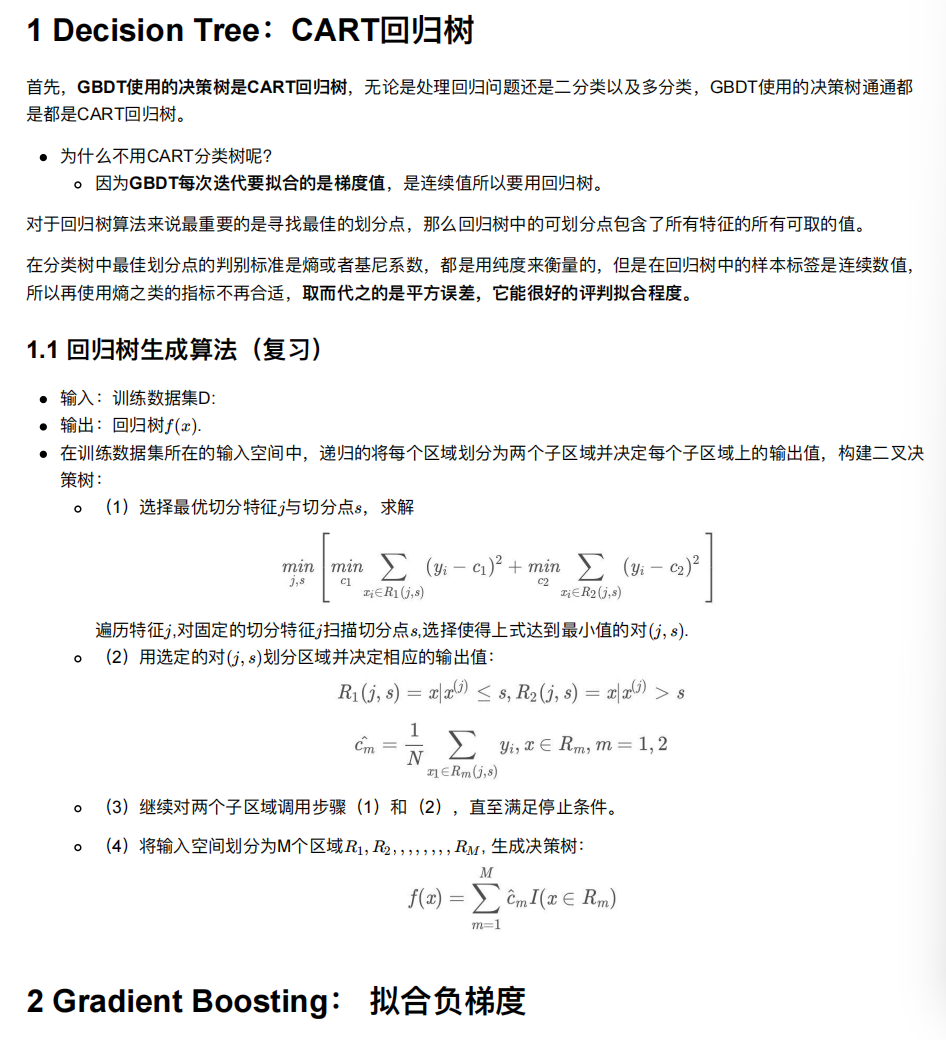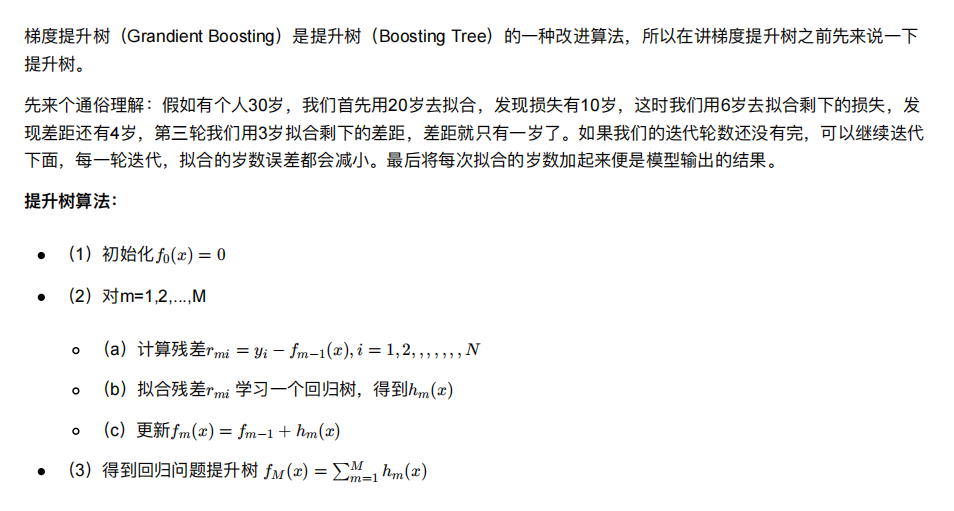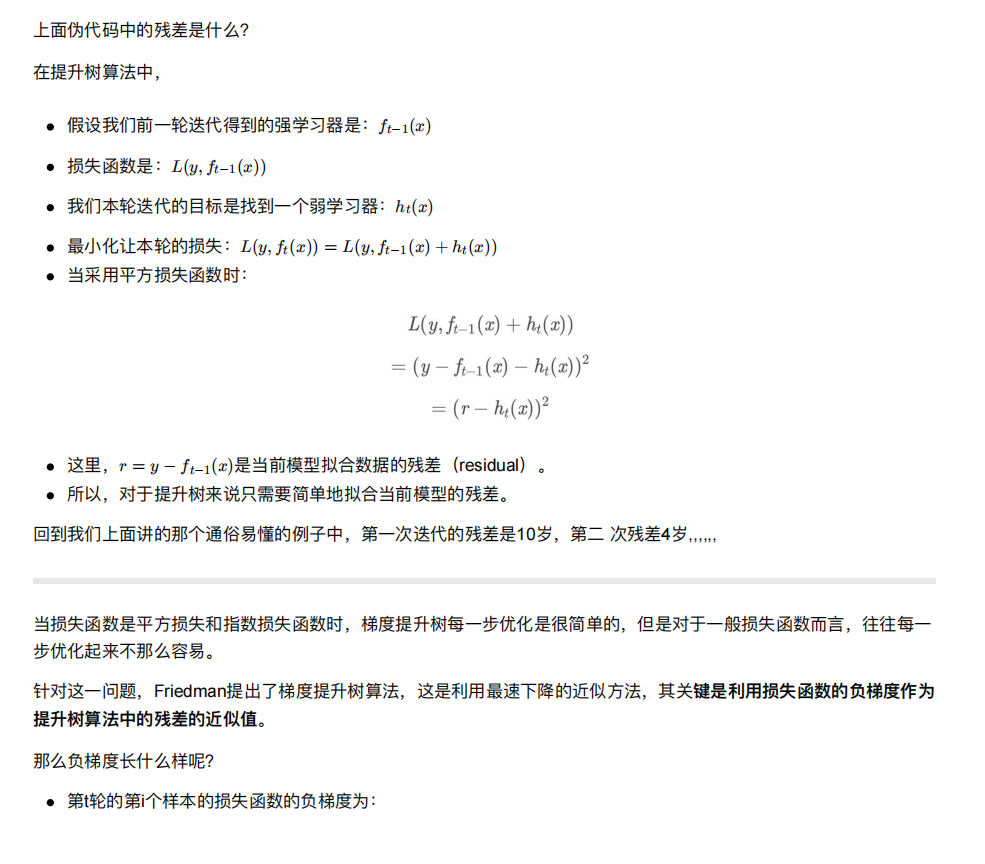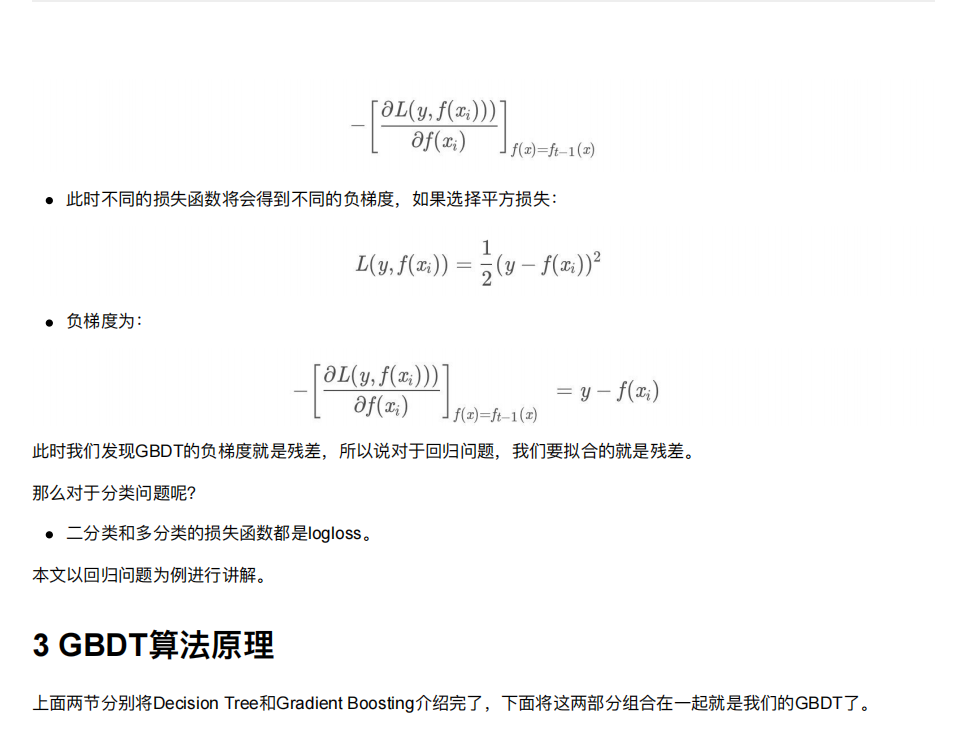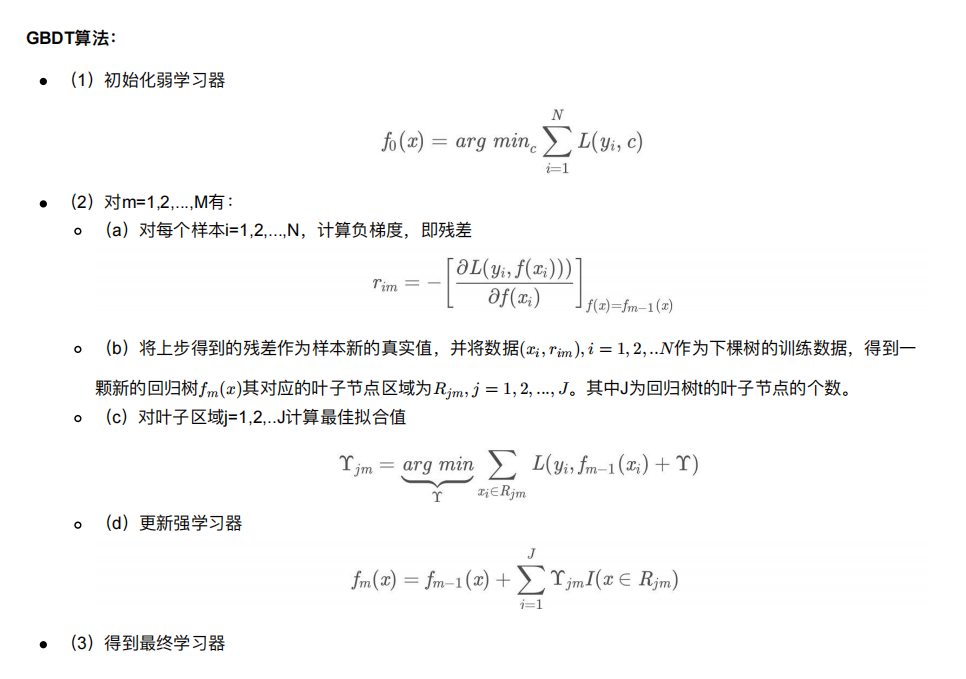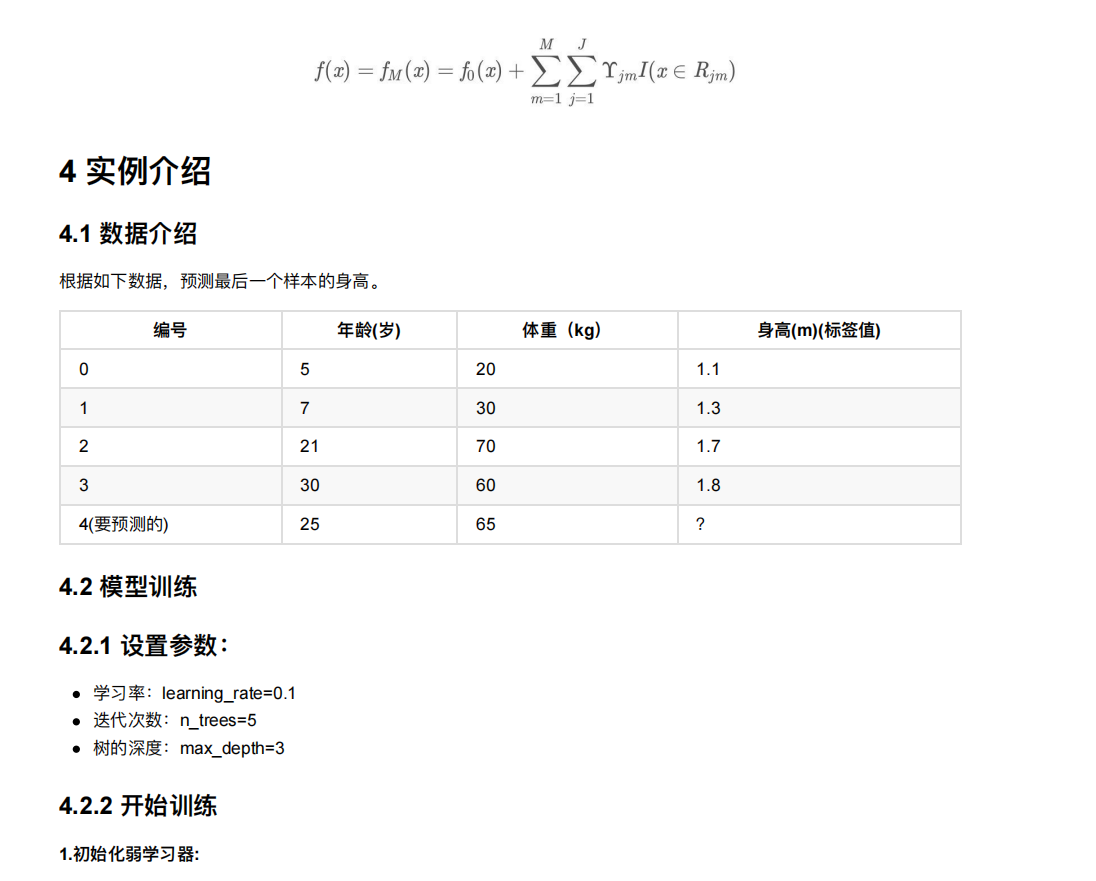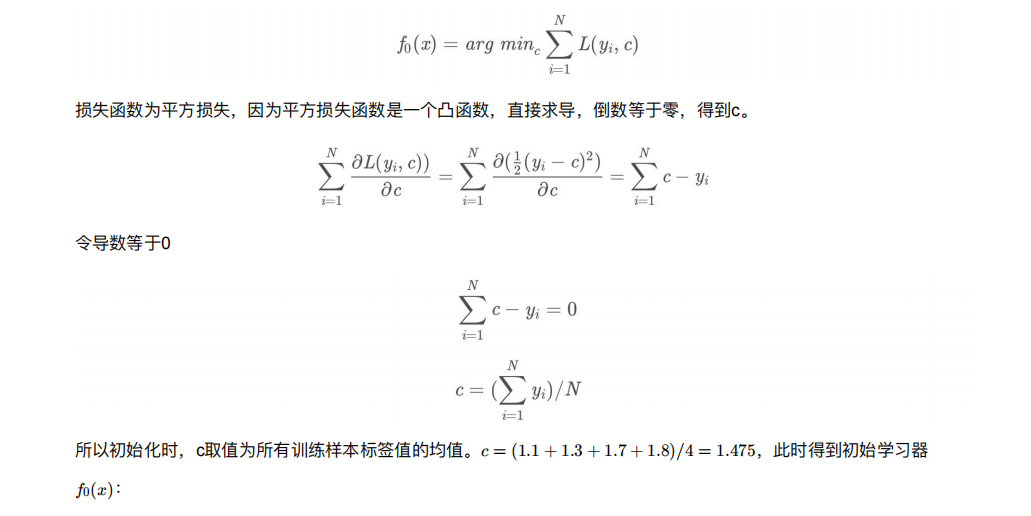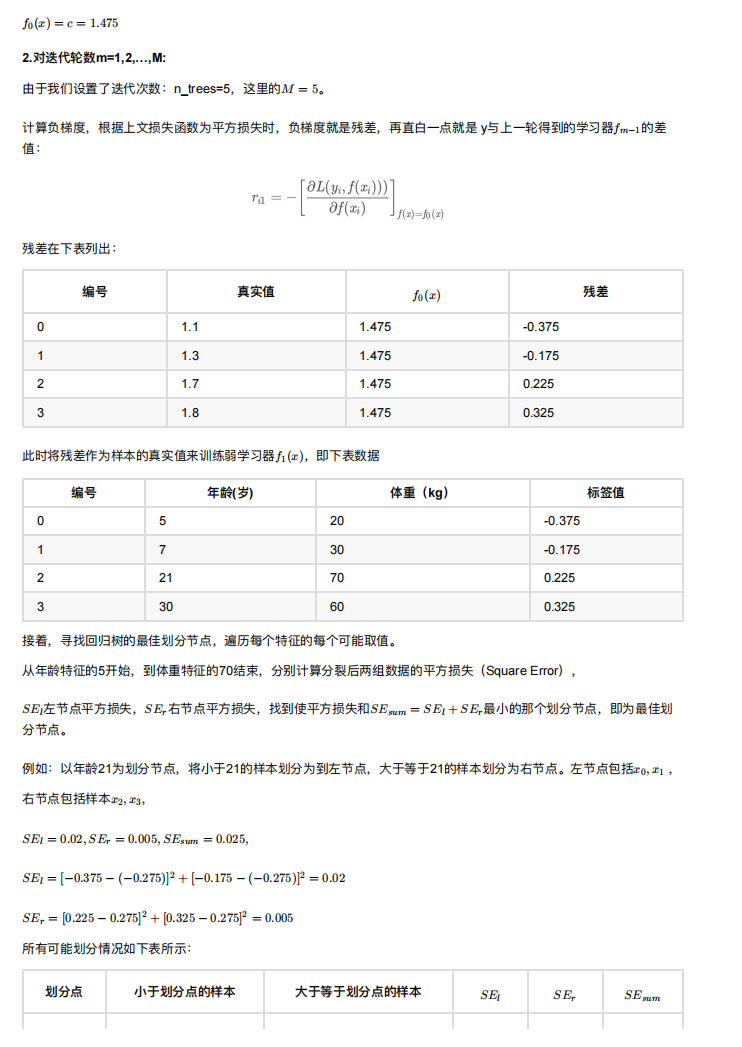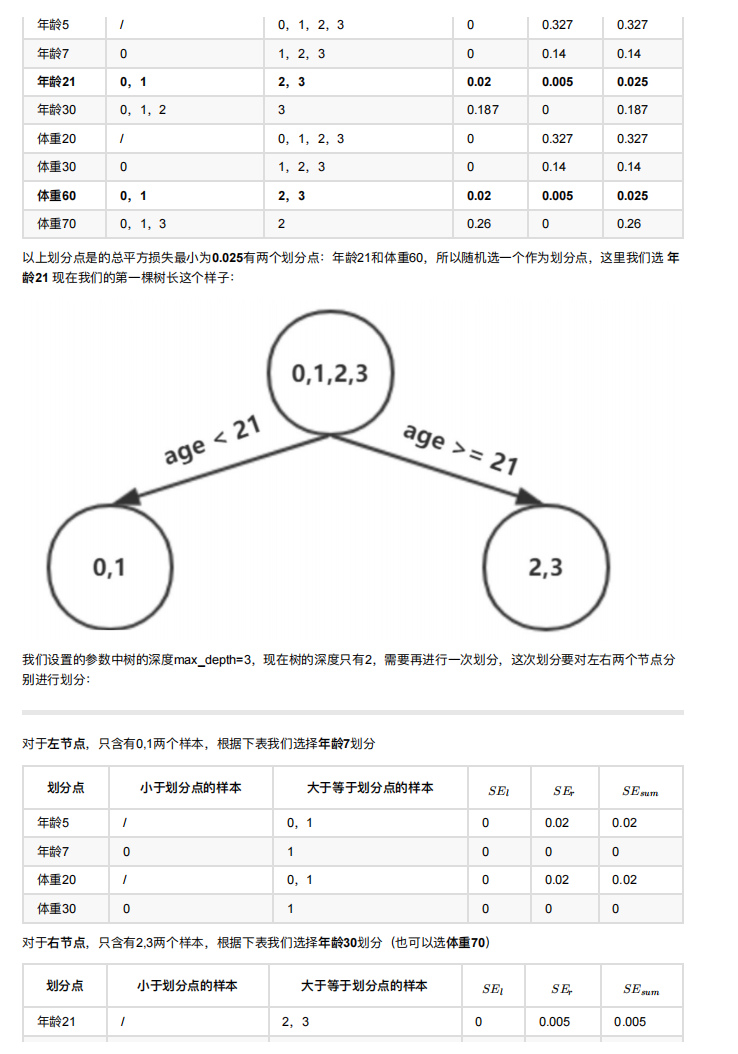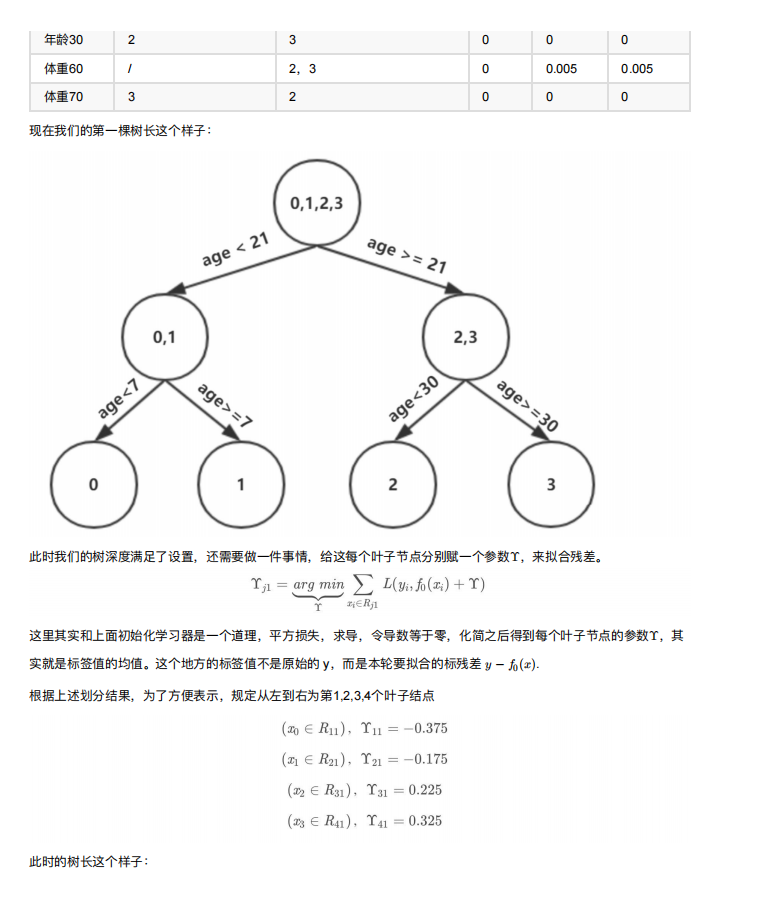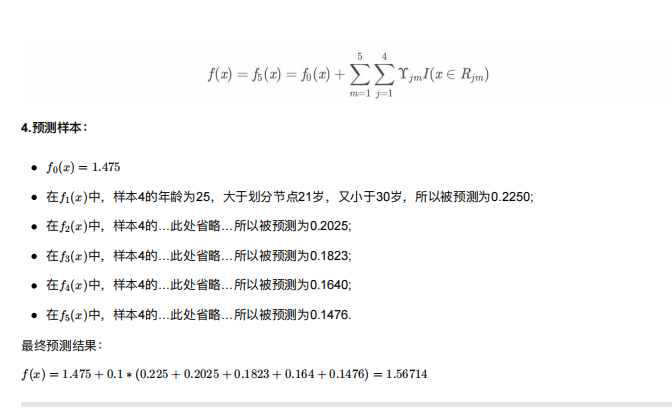Python11-集成学习
提示:文章写完后,目录可以自动生成,如何生成可参考右边的帮助文档
文章目录
- 前言
- 1. 介绍
- 1.1 集成学习中boosting和Bagging
- 2. Bagging和随机森林
- 2.1 随机森林构造过程
- 2.2 包外估计
- 2.3 随机森林api介绍
- 2.4 随机森林预测案例
- 3. otto案例介绍
- 4.1 流程分析
- 4.2 数据基本处理
- 4.3 模型基本训练
- 4.4 模型调优
- 4.5 生成提交数据
- 4. Boosting
- 5. GBDT介绍
- 总结13.03
前言
1. 介绍
集成学习通过建⽴⼏个模型来解决单⼀预测问题。它的⼯作原理是⽣成多个分类器/模型,各⾃独⽴地学习和作出预
测。这些预测最后结合成组合预测,因此优于任何⼀个单分类的做出预测
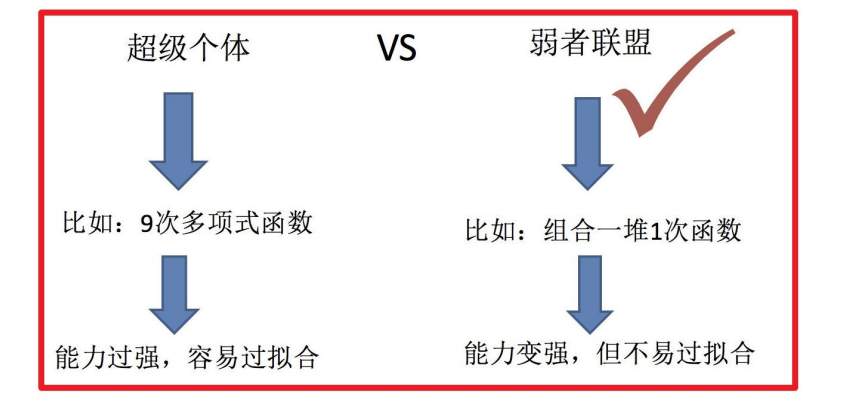
1.1 集成学习中boosting和Bagging
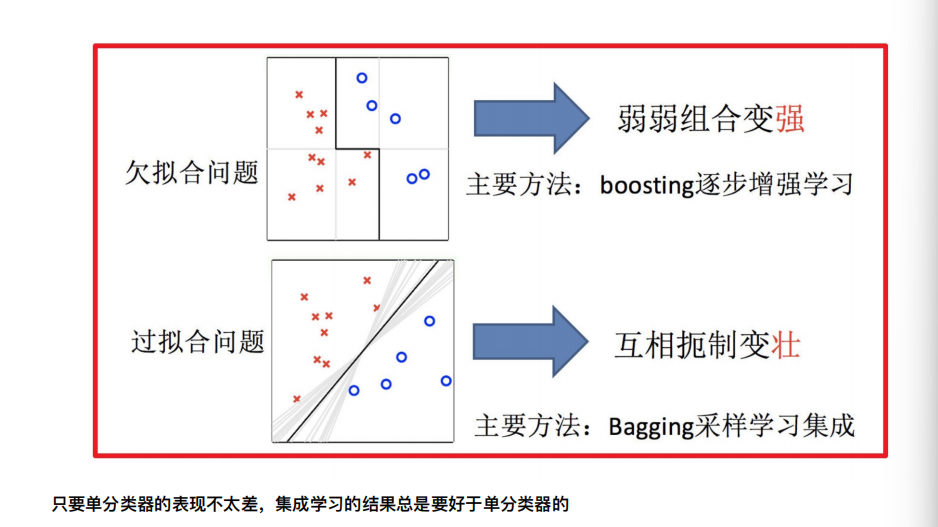
只要单分类器的表现不太差,集成学习的结果总是要好于单分类器的
2. Bagging和随机森林
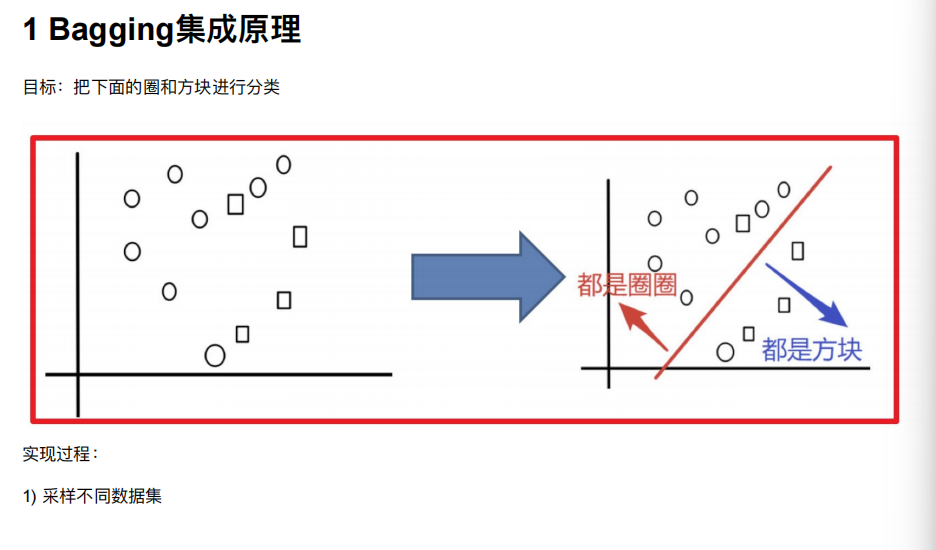
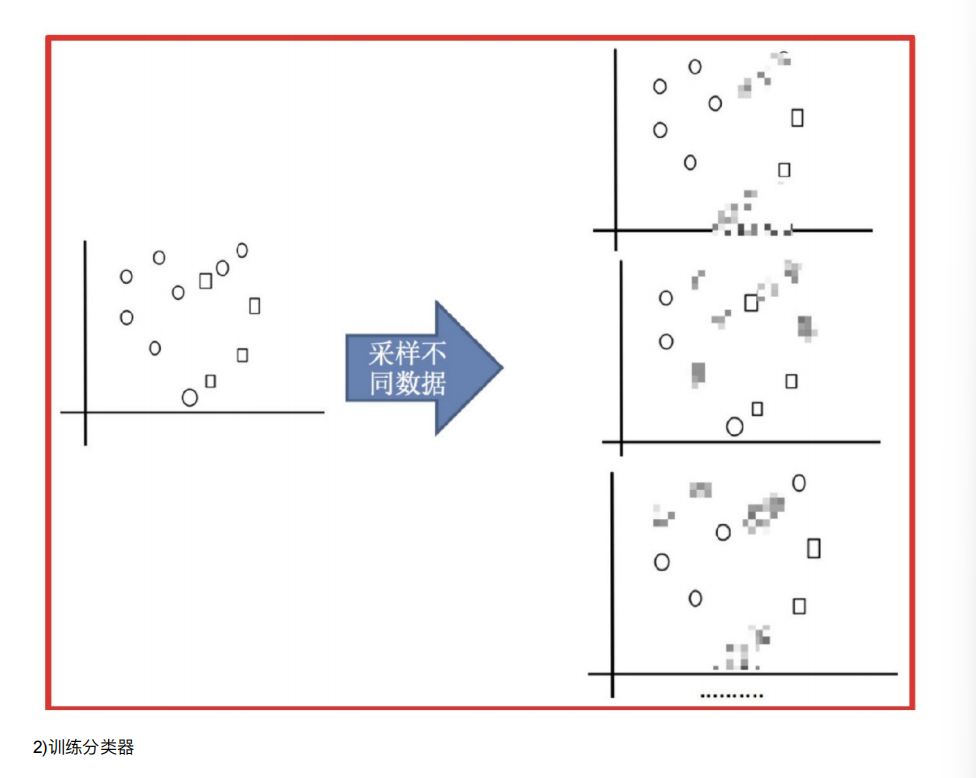
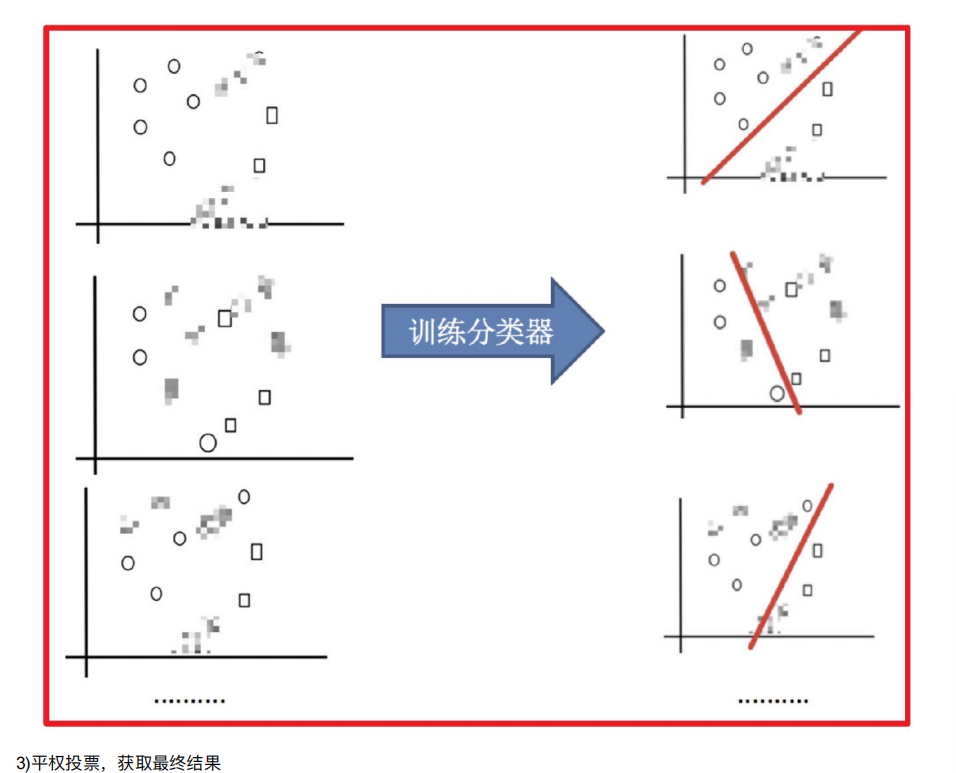
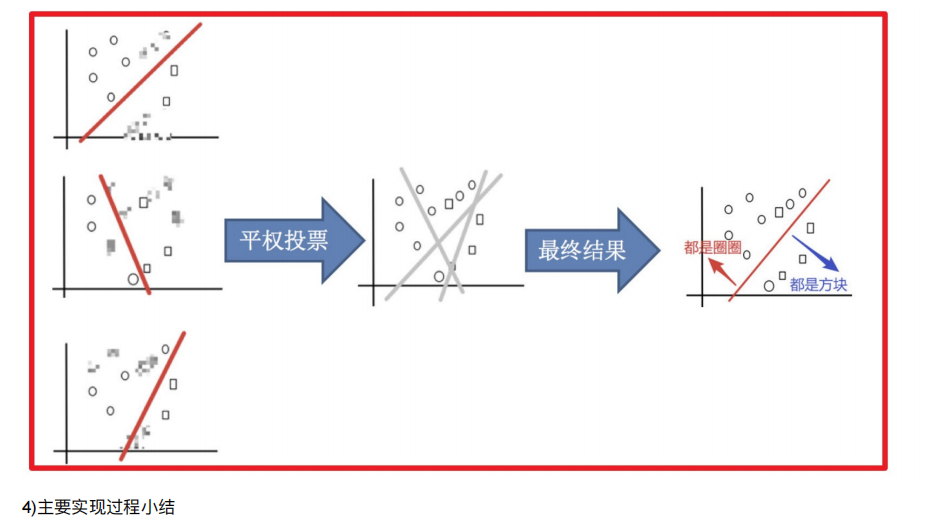
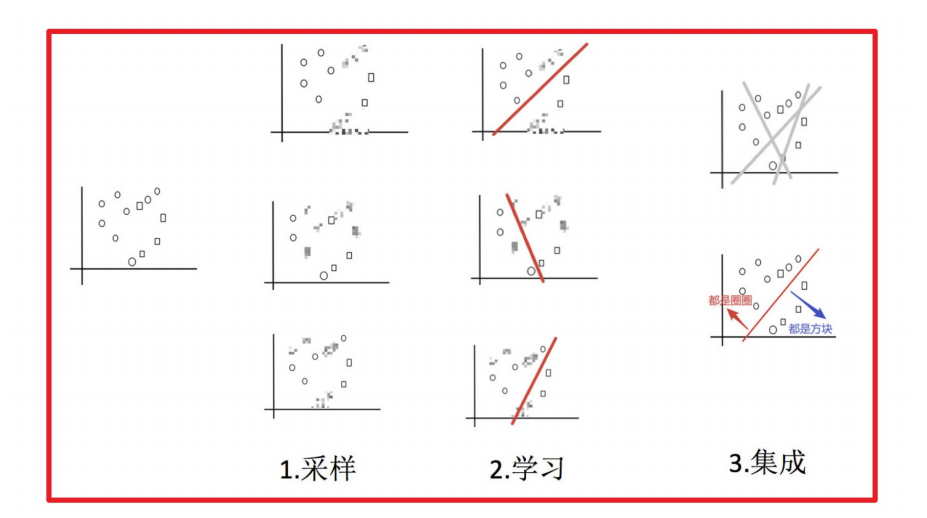
2.1 随机森林构造过程
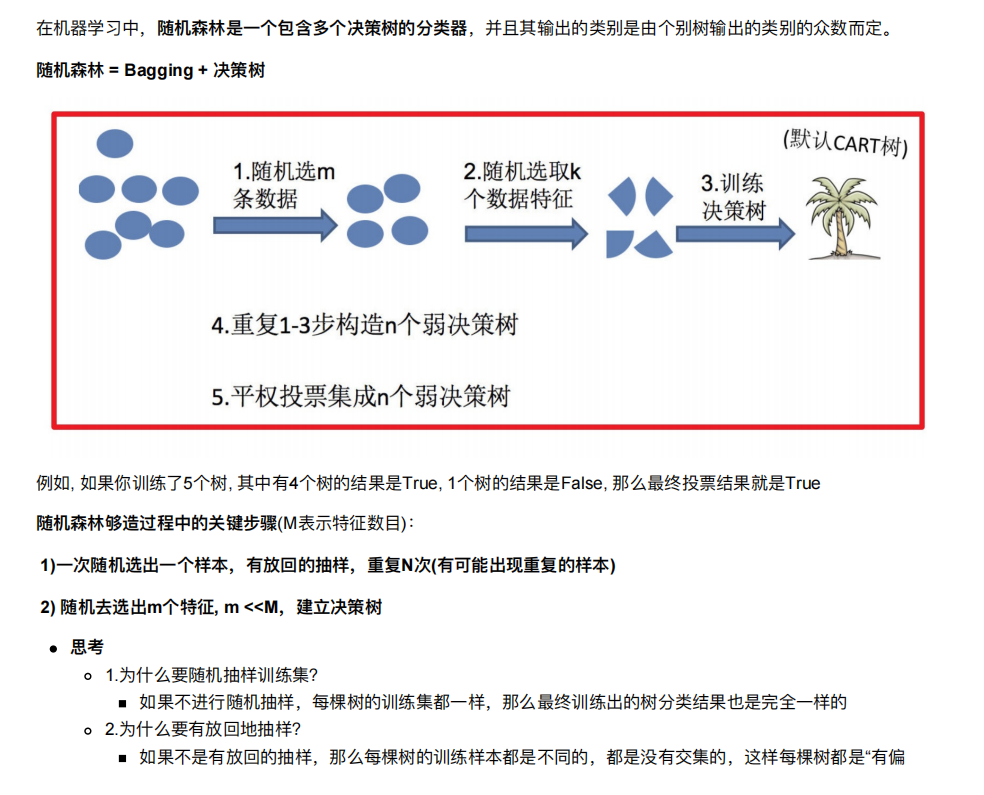

2.2 包外估计
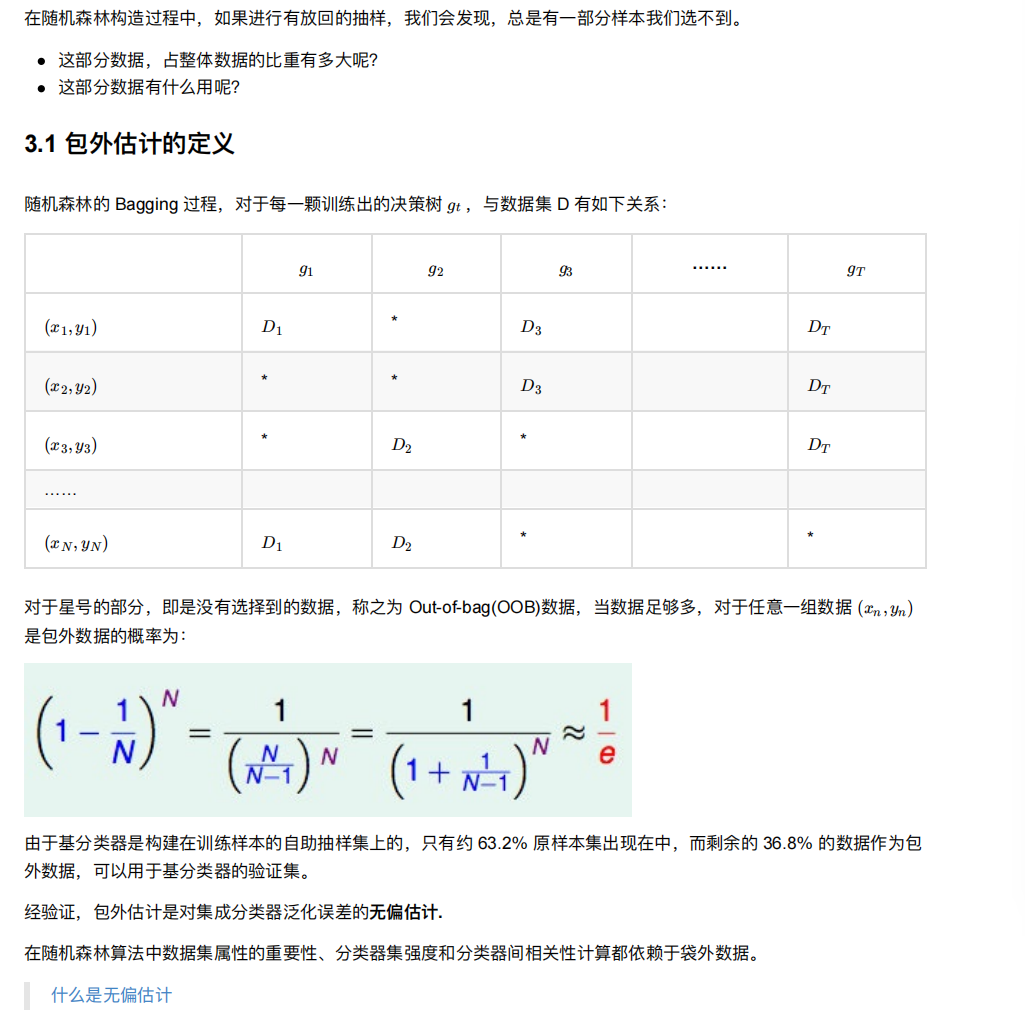
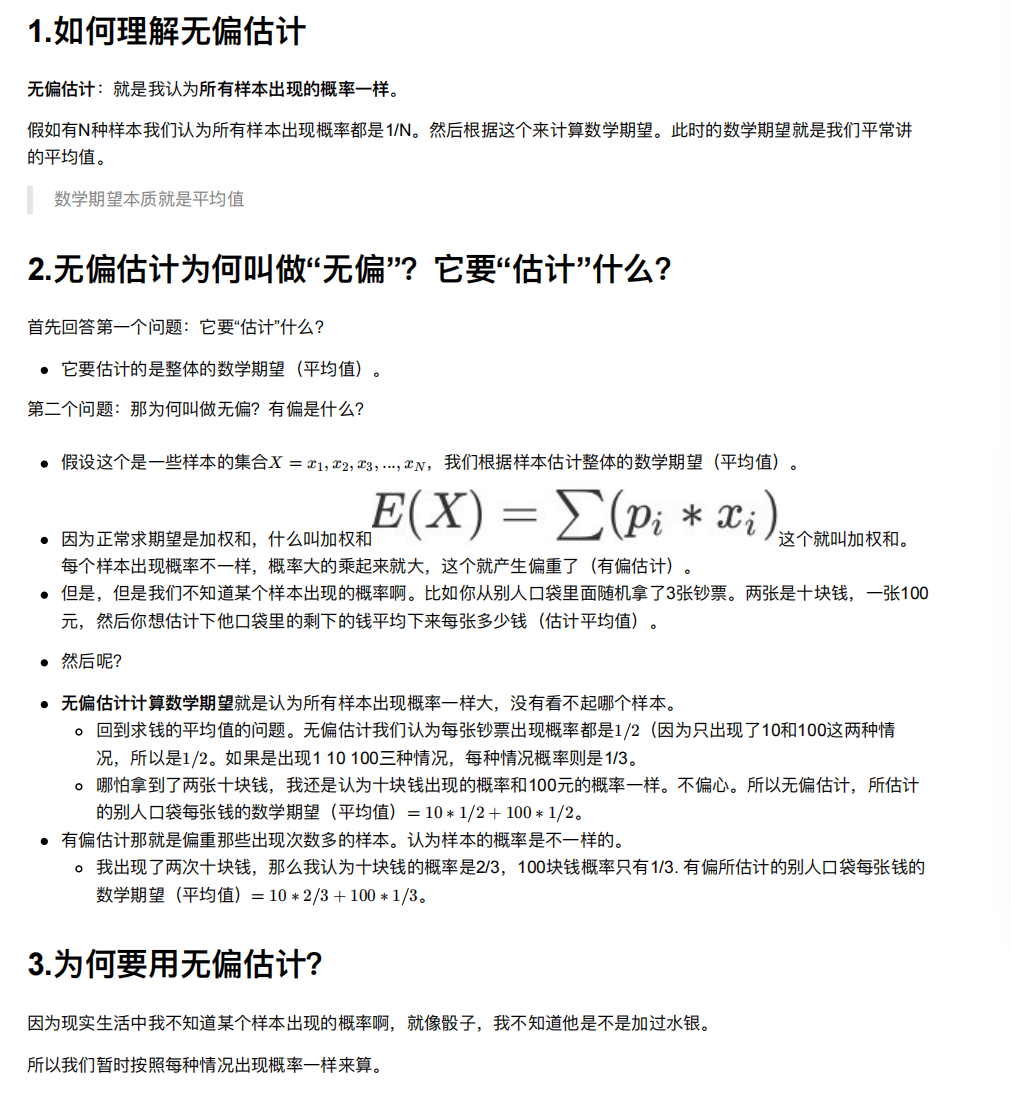

2.3 随机森林api介绍
sklearn.ensemble.RandomForestClassifier(n_estimators=10, criterion=’gini’, max_depth=None, bootstrap=True,random_state=None, min_samples_split=2)
n_estimators:表示是多少棵决策树集成森林
Criterion:string,可选(default =“gini”)
分割特征的测量⽅法
max_depth:integer或None,可选(默认=⽆)
树的最⼤深度 5,8,15,25,30
max_features="auto”,每个决策树的最⼤特征数量
If "auto", then max_features=sqrt(n_features) .
If "sqrt", then max_features=sqrt(n_features) (same as "auto").
If "log2", then max_features=log2(n_features) .
If None, then max_features=n_features .
bootstrap:boolean,optional(default = True)
是否在构建树时使⽤放回抽样
min_samples_split 内部节点再划分所需最⼩样本数
这个值限制了⼦树继续划分的条件,如果某节点的样本数少于min_samples_split,则不会继续再尝试选择最优特征来进⾏划分,默认是2。
如果样本量不⼤,不需要管这个值。如果样本量数量级⾮常⼤,则推荐增⼤这个值。
min_samples_leaf 叶⼦节点的最⼩样本数
这个值限制了叶⼦节点最少的样本数,如果某叶⼦节点数⽬⼩于样本数,则会和兄弟节点⼀起被剪枝,默认是1。
叶是决策树的末端节点。 较⼩的叶⼦使模型更容易捕捉训练数据中的噪声。
min_impurity_split: 节点划分最⼩不纯度
这个值限制了决策树的增⻓,如果某节点的不纯度(基于基尼系数,均⽅差)⼩于这个阈值,则该节点不再⽣成⼦节点。即为叶⼦节点
上⾯决策树参数中最重要的包括
最⼤特征数max_features,
最⼤深度max_depth,
内部节点再划分所需最⼩样本数min_samples_split
叶⼦节点最少样本数min_samples_leaf。
2.4 随机森林预测案例
还是选择的原来的泰坦尼克号数据
#实例化一个随机森林
from sklearn.ensemble import RandomForestClassifier
rf = RandomForestClassifier()
#通过超参数调优
from sklearn.model_selection import GridSearchCV
param = {"n_estimators":[100,120,300],"max_depth":[3,7,10]}
gc = GridSearchCV(rf,param_grid=param,cv=3)
gc.fit(x_train,y_train)
n_estimators:控制随机森林中决策树的数量(这里尝试 100、120、300 三档)。树越多通常性能越好,但计算成本也越高
max_depth:控制每棵决策树的最大深度(这里尝试 3、7、10 三档)。深度越小,模型越简单(不易过拟合);深度越大,模型越复杂(可能过拟合)
param_grid=param, # 要搜索的超参数组合
网格搜索(GridSearchCV)
交叉验证(cv=3)
这个意思就是利用网格搜索找出最好的随机森林(从三个中找出来)gc
print("随机森林预测结果是:\n",gc.score(x_test,y_test))

Bagging + 决策树/线性回归/逻辑回归/深度学习… = bagging集成学习⽅法
经过上⾯⽅式组成的集成学习⽅法:
- 均可在原有算法上提⾼约2%左右的泛化正确率
- 简单, ⽅便, 通⽤
3. otto案例介绍
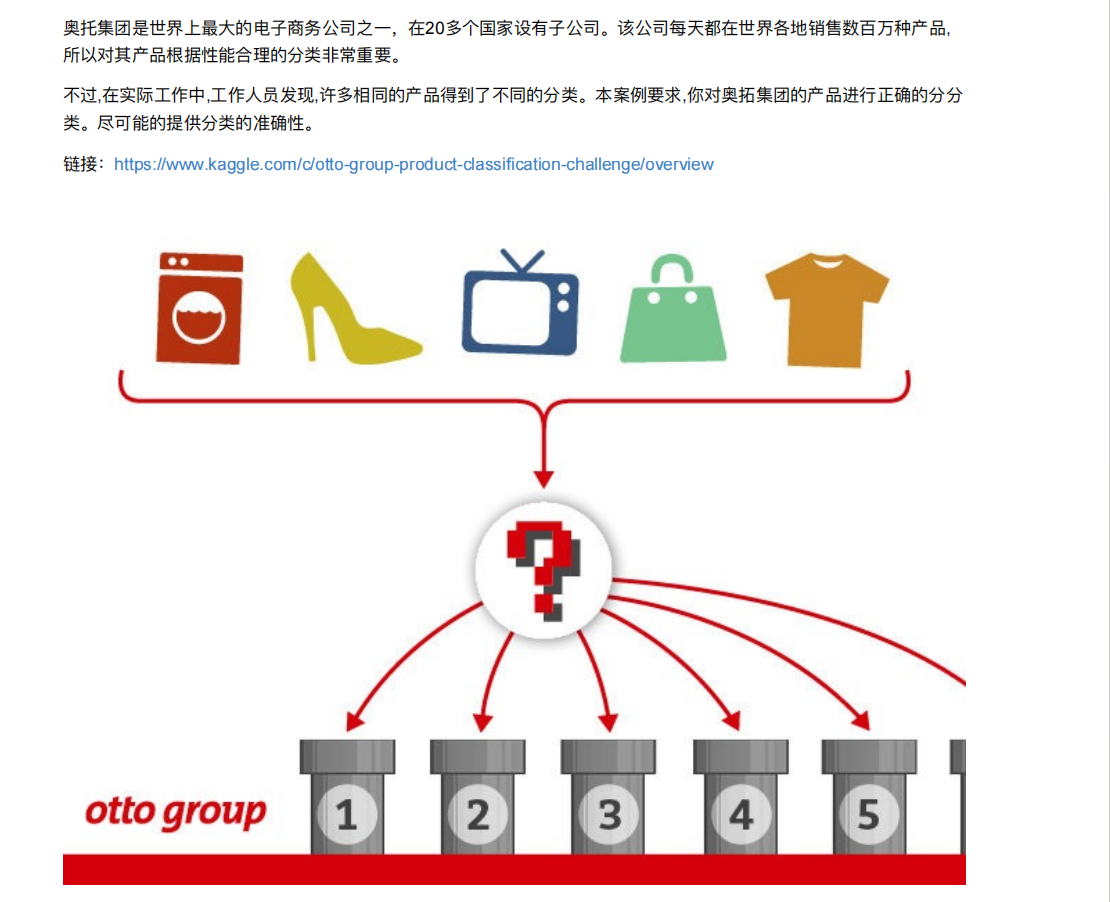


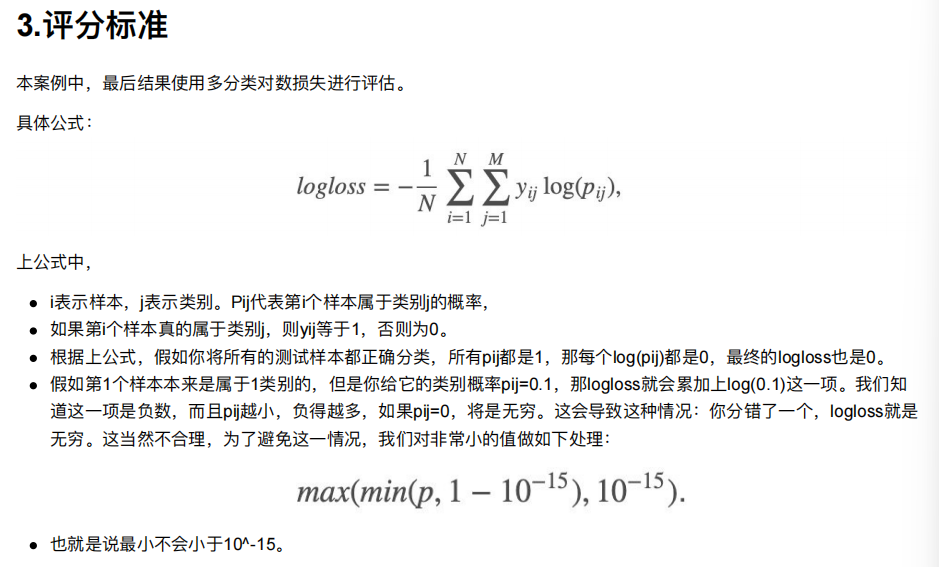
4.1 流程分析
获取数据
数据基本处理
数据量⽐较⼤,尝试是否可以进⾏数据分割
转换⽬标值表示⽅式
模型训练
模型基本训练
import numpy as np
import pandas as pd
import matplotlib.pyplot as plt
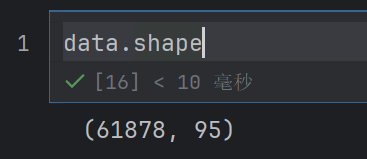
#图像可视化,查看数据分布
import seaborn as sns
sns.countplot(x=data.target)
plt.show()
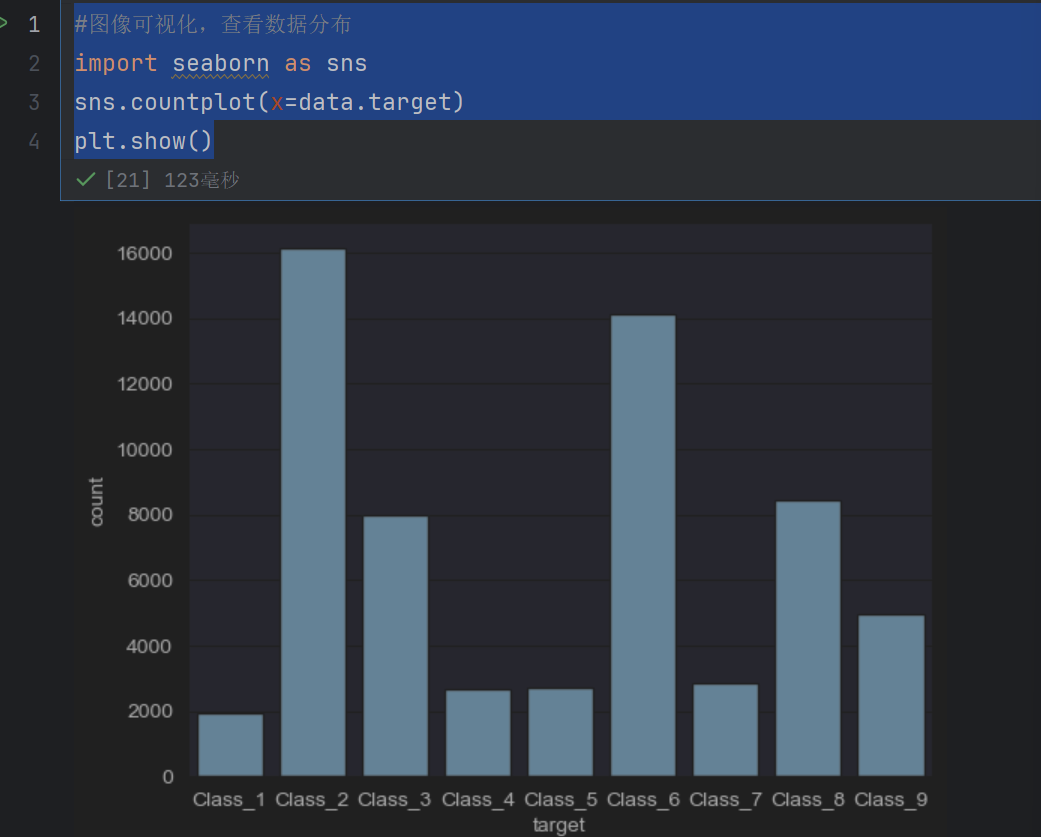
我们发现数据不平衡,类别不均衡–》纵坐标为数量
4.2 数据基本处理
#数据基本处理,数据已经脱敏,不在需要特殊处理
#数据截取
new1_data = data[:10000]
new1_data
这样直接截取前面10000是肯定不可以的
#数据基本处理,数据已经脱敏,不在需要特殊处理
#数据截取:随机欠采样
y = data["target"]
x=data.drop(["id","target"],axis=1)
y就是目标值了
x就少了两列了
#欠采样获取数据
from imblearn.under_sampling import RandomUnderSampler
rus = RandomUnderSampler(random_state=42)
x_res, y_res = rus.fit_resample(x, y)
#图像可视化,查看数据分布
import seaborn as sns
sns.countplot(x=y_res)
plt.show()
欠采样是通过减少多数类样本数量,使不同类别样本数量趋于平衡的方法
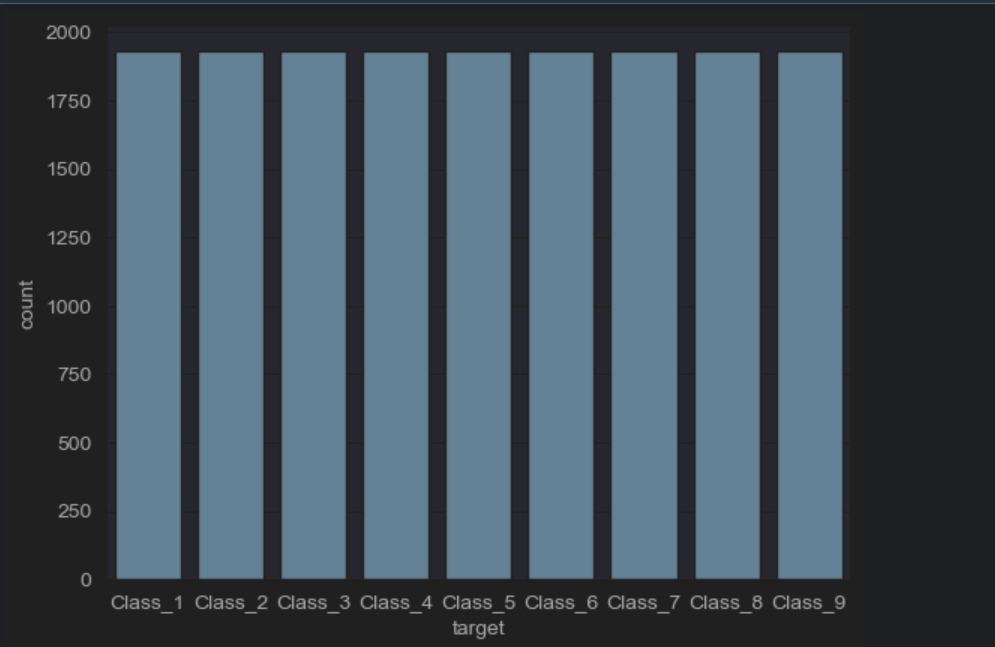
#将Class_1这种标签值改为数字
from sklearn.preprocessing import LabelEncoder
le = LabelEncoder()
y_res = le.fit_transform(y_res)
y_res
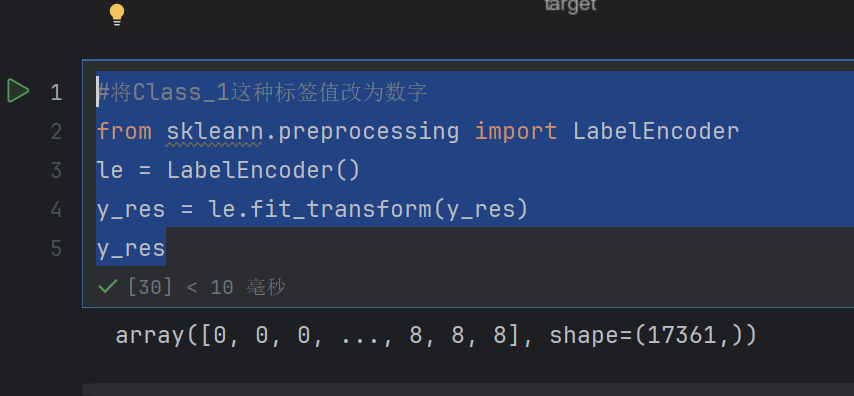
拟合(fit):
分析输入的标签数据(y_res),提取其中所有唯一的类别(比如 Class_1、Class_2、Class_3 等)。
为每个唯一类别分配一个对应的整数(通常从 0 开始依次编号),建立 “类别→数字” 的映射关系。例如:
Class_1 → 0
Class_2 → 1
Class_3 → 2
转换(transform):
根据第一步建立的映射关系,将原始标签数据(如 Class_1、Class_2 等)转换为对应的数字。
最终输出全是数字的标签数组(y_res),方便机器学习模型处理(大多数模型只能接受数值型输入)
#分割数据,测试集和训练集
from sklearn.model_selection import train_test_split
x_train, x_test, y_train, y_test = train_test_split(x_res, y_res, test_size=0.2, random_state=42)
4.3 模型基本训练
#模型基本训练
from sklearn.ensemble import RandomForestClassifier
rf=RandomForestClassifier(oob_score= True)
rf.fit(x_train,y_train)
oob_score=True 是一个非常实用的参数,其中 OOB 是 Out-of-Bag(袋外样本)
随机森林在构建每棵决策树时,会通过 Bootstrap 抽样(有放回的随机抽样)从训练集中抽取部分样本作为该树的训练数据。
那些未被抽到的样本,就称为这棵树的 “袋外样本”(OOB 样本)。
由于是随机抽样,每棵树都会有自己的 OOB 样本,整体上约有 37% 的样本会成为某棵树的 OOB 样本(数学上的近似结果)。
当设置 oob_score=True 时,模型会在训练完成后:
用每棵树的 OOB 样本作为 “验证集”,对该树进行预测;
综合所有树的预测结果(对 OOB 样本的预测),计算出一个整体的模型性能得分(默认是准确率,分类问题)。
这个得分被称为 OOB 分数,可以通过 rf.oob_score_ 查看
rf.oob_score_
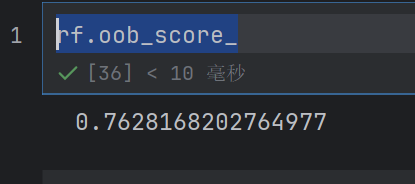
y_pre=rf.predict(x_test)
print(y_pre)
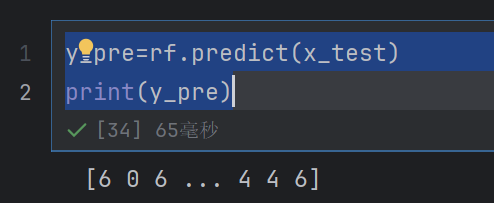
rf.score(x_test,y_test)
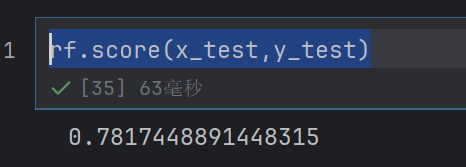
#图像可视化,查看数据分布
import seaborn as sns
sns.countplot(x=y_pre)
plt.show()
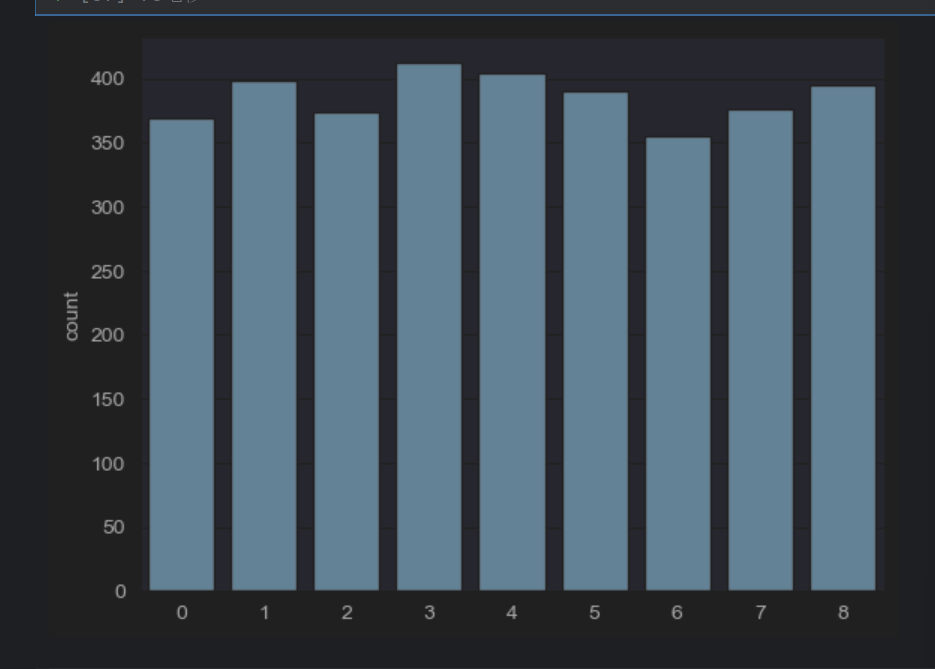
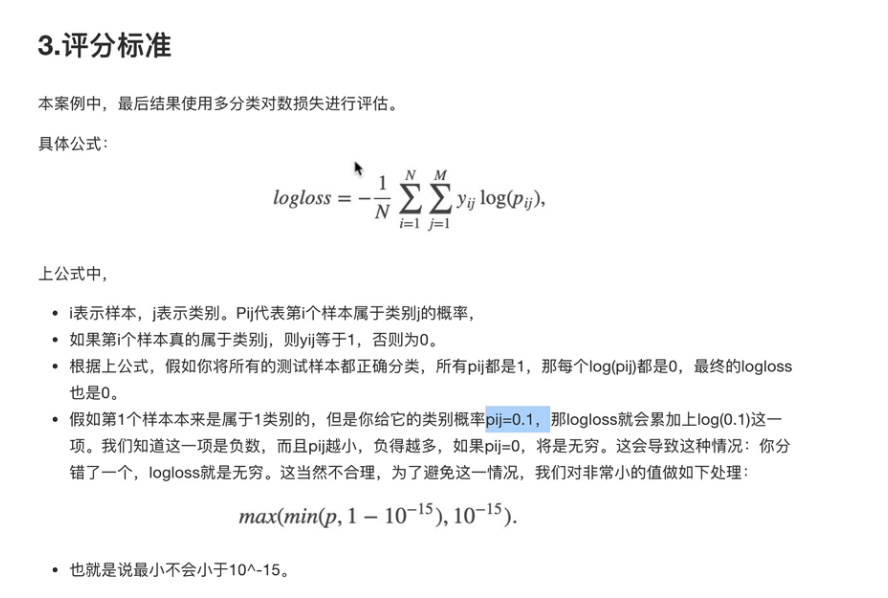
但是我们要用这个logloss进行评估才可以
#logloss模型评估
from sklearn.metrics import log_loss
log_loss(y_test,y_pre,epsilon=1e-15,normalize=True)
epsilon=1e-15:用于数值稳定性的极小值。因为对数损失计算中包含 log§ 操作,当 p 接近 0 时,log§ 会趋于无穷大。这个参数会将预测概率限制在 [epsilon, 1-epsilon] 范围内,避免计算错误。
normalize=True:是否对损失值进行归一化。
若为 True(默认),返回的是平均对数损失(总损失除以样本数量)。
若为 False,返回的是总对数损失(所有样本的损失之和)。
但是注意第二个参数必须是oneHot编码的显示的
所以这样是不行的
from sklearn.preprocessing import OneHotEncoder
onehot = OneHotEncoder(sparse_output= False)
y_test1=onehot.fit_transform(y_test.reshape(-1,1))
y_pre1=onehot.transform(y_pre.reshape(-1,1))
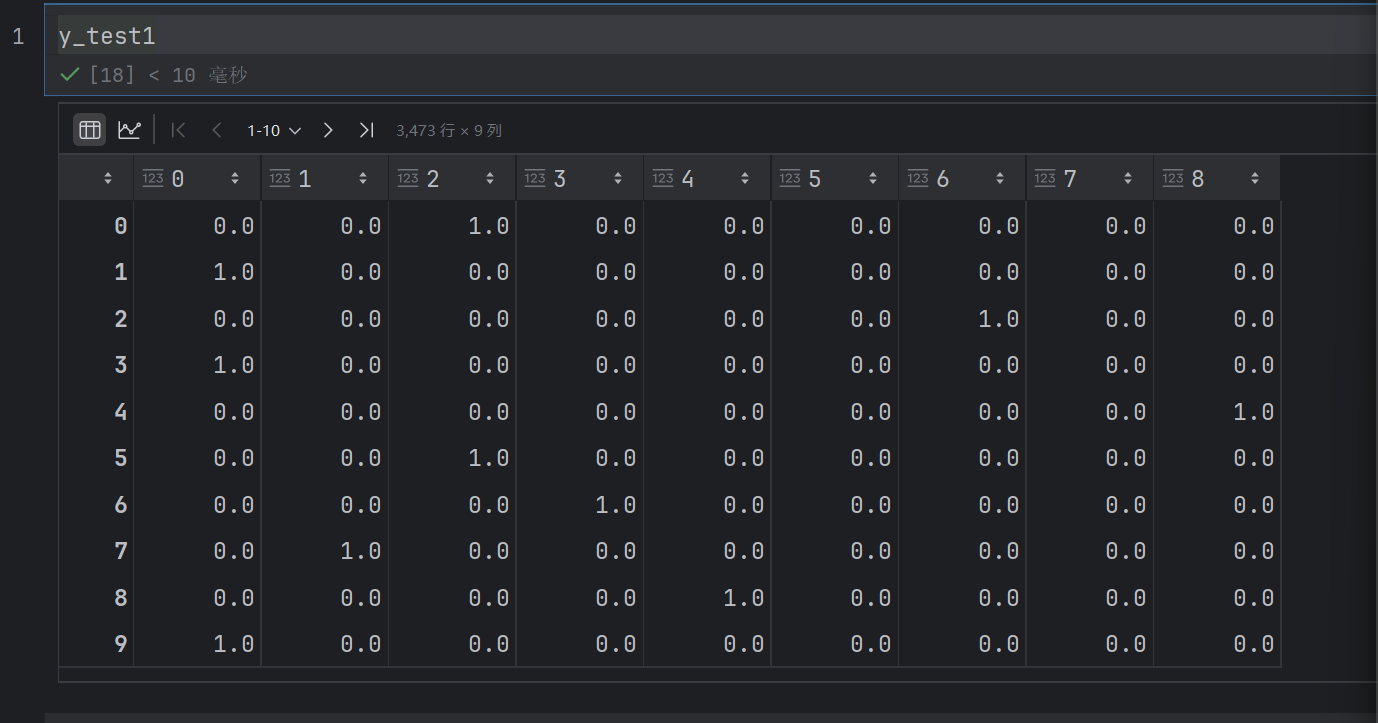
sparse_output=False:设置输出为密集数组(而非稀疏矩阵),这样得到的编码结果是常规的 NumPy 数组,更直观易处理
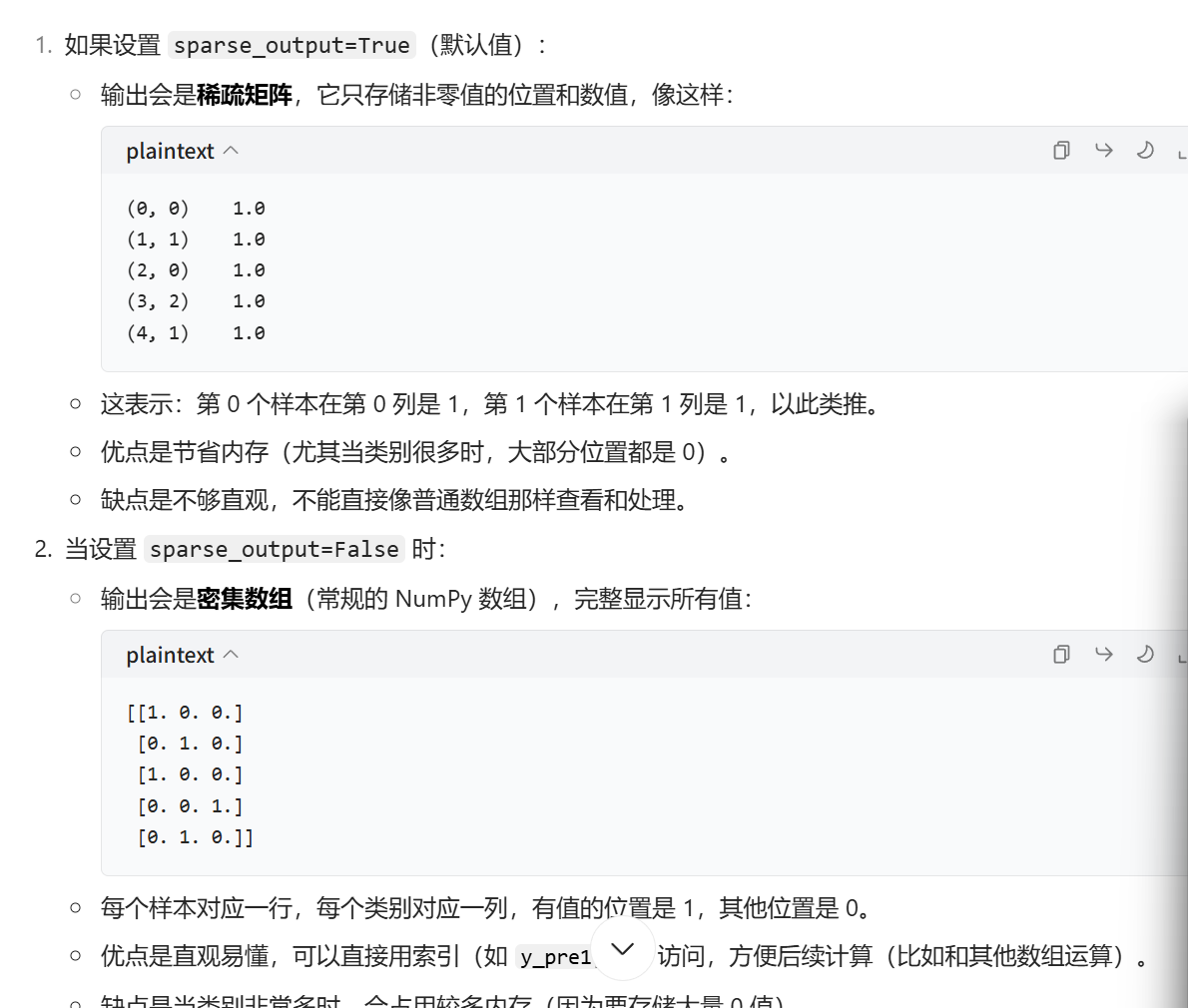
#logloss模型评估
from sklearn.metrics import log_loss
log_loss(y_test1,y_pre1,normalize=True)
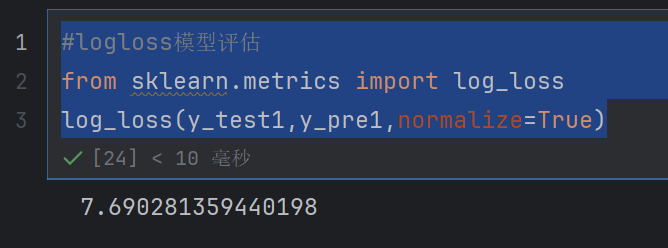
这样就求出来了
可以把logloss变小呢
#通过预测值,改变预测值的输出模式,让输出结果为百分占比,降低logloss
y_pre_proba=rf.predict_proba(x_test)
y_pre_proba
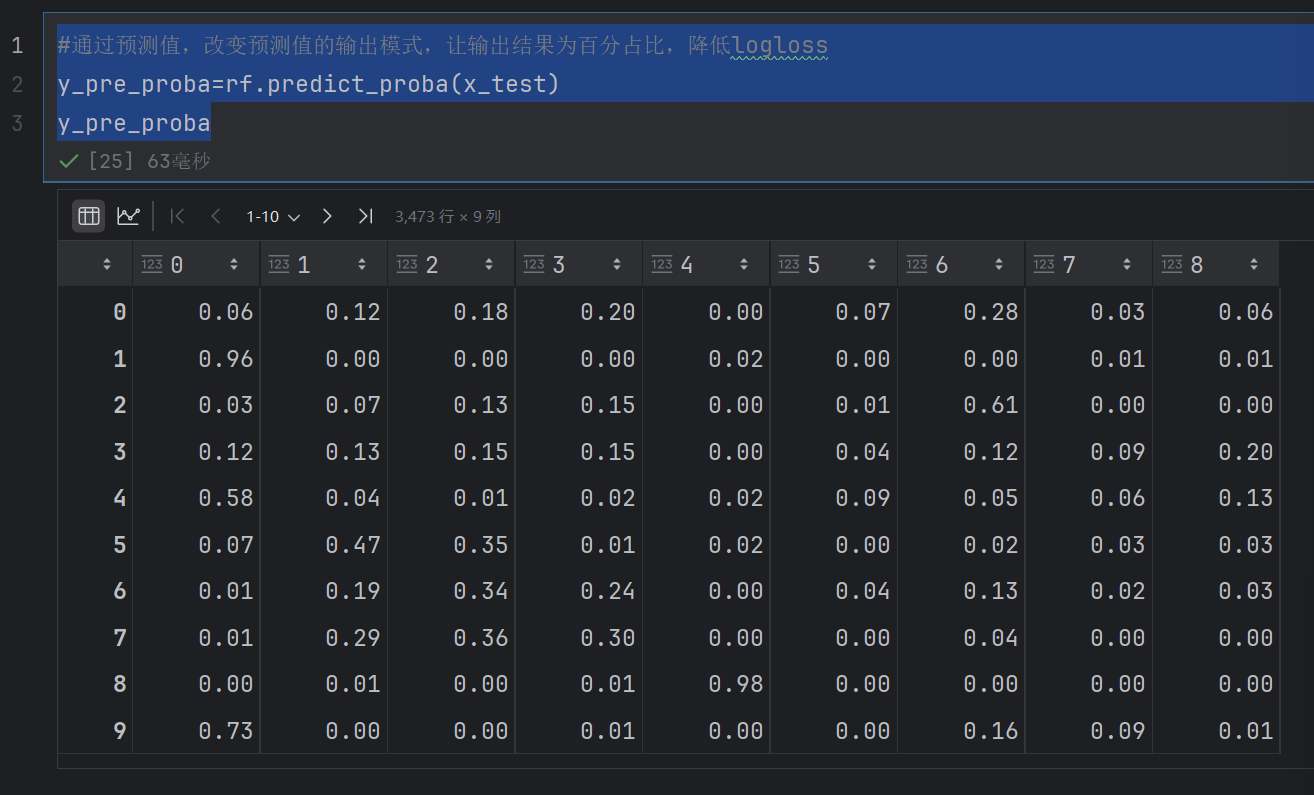
这个就是预测出现每个类别的可能性是多少
就不是直接预测可能是哪个类别,然后预测是每个类别的可能性是多少
log_loss(y_test1,y_pre_proba,normalize=True)

这个logloss直接就变成零点几了
4.4 模型调优
#模型调优-->超参数
##确定最优的n_estimators
tuned_parameters = range(10,200,10)
#创建添加accuracy的numpy
accuracy_t = np.zeros(len(tuned_parameters))
#创建添加error的numpy
error_t = np.zeros(len(tuned_parameters))
#调优过程实现
for i,n_estimators in enumerate(tuned_parameters):rf2 = RandomForestClassifier(n_estimators=n_estimators,max_depth=10,max_features=10,min_samples_leaf=10,random_state=0,n_jobs=-1,oob_score=True)rf2.fit(x_train,y_train)accuracy_t[i] = rf2.oob_score_y_pre=rf2.predict_proba(x_test)error_t[i]=log_loss(y_test1,y_pre,normalize=True)print(error_t)

我们直接看最后的输出,发现logloss是一直在变小的
#优化结果过程可视化
fig,axes=plt.subplots(nrows=1,ncols=2,figsize=(20,4),dpi=100)
axes[0].plot(tuned_parameters,error_t)
axes[0].set_xlabel("n_estimators")
axes[0].set_ylabel("error_t")
axes[0].grid(True)
axes[1].plot(tuned_parameters,accuracy_t)
axes[1].set_xlabel("n_estimators")
axes[1].set_ylabel("accuracy_t")
axes[1].grid(True)
plt.show()

所以经过图像展示,发现n_estimators=175就和合适,logloss就很小,然后accuracy_t很高
#模型调优-->超参数
##确定最优的max_features
tuned_parameters = range(5,40,5)
#创建添加accuracy的numpy
accuracy_t = np.zeros(len(tuned_parameters))
#创建添加error的numpy
error_t = np.zeros(len(tuned_parameters))
#调优过程实现
for i,n_estimators in enumerate(tuned_parameters):rf2 = RandomForestClassifier(n_estimators=175,max_depth=10,max_features=n_estimators,min_samples_leaf=10,random_state=0,n_jobs=-1,oob_score=True)rf2.fit(x_train,y_train)accuracy_t[i] = rf2.oob_score_y_pre=rf2.predict_proba(x_test)error_t[i]=log_loss(y_test1,y_pre,normalize=True)print(error_t)
#优化结果过程可视化
fig,axes=plt.subplots(nrows=1,ncols=2,figsize=(20,4),dpi=100)
axes[0].plot(tuned_parameters,error_t)
axes[0].set_xlabel("max_features")
axes[0].set_ylabel("error_t")
axes[0].grid(True)
axes[1].plot(tuned_parameters,accuracy_t)
axes[1].set_xlabel("max_features")
axes[1].set_ylabel("accuracy_t")
axes[1].grid(True)
plt.show()

发现max_features=15的时候就很好了
#模型调优-->超参数
##确定最优的max_depth
tuned_parameters = range(10,100,10)
#创建添加accuracy的numpy
accuracy_t = np.zeros(len(tuned_parameters))
#创建添加error的numpy
error_t = np.zeros(len(tuned_parameters))
#调优过程实现
for i,n_estimators in enumerate(tuned_parameters):rf2 = RandomForestClassifier(n_estimators=175,max_depth=n_estimators,max_features=15,min_samples_leaf=10,random_state=0,n_jobs=-1,oob_score=True)rf2.fit(x_train,y_train)accuracy_t[i] = rf2.oob_score_y_pre=rf2.predict_proba(x_test)error_t[i]=log_loss(y_test1,y_pre,normalize=True)print(error_t)
#优化结果过程可视化
fig,axes=plt.subplots(nrows=1,ncols=2,figsize=(20,4),dpi=100)
axes[0].plot(tuned_parameters,error_t)
axes[0].set_xlabel("max_depth")
axes[0].set_ylabel("error_t")
axes[0].grid(True)
axes[1].plot(tuned_parameters,accuracy_t)
axes[1].set_xlabel("max_depth")
axes[1].set_ylabel("accuracy_t")
axes[1].grid(True)
plt.show()

发现max_depth=30刚刚好
min_samples_leaf 是一个重要的超参数,用于控制决策树叶子节点的最小样本数量
当 min_samples_leaf=1 时,允许叶子节点只包含 1 个样本(最灵活但可能过拟合)
当 min_samples_leaf=10 时,要求每个叶子节点至少包含 10 个样本(更保守,不易过拟合)
#模型调优-->超参数
##确定最优的min_samples_leaf
tuned_parameters = range(1,10,2)
#创建添加accuracy的numpy
accuracy_t = np.zeros(len(tuned_parameters))
#创建添加error的numpy
error_t = np.zeros(len(tuned_parameters))
#调优过程实现
for i,n_estimators in enumerate(tuned_parameters):rf2 = RandomForestClassifier(n_estimators=175,max_depth=30,max_features=15,min_samples_leaf=n_estimators,random_state=0,n_jobs=-1,oob_score=True)rf2.fit(x_train,y_train)accuracy_t[i] = rf2.oob_score_y_pre=rf2.predict_proba(x_test)error_t[i]=log_loss(y_test1,y_pre,normalize=True)print(error_t)
#优化结果过程可视化
fig,axes=plt.subplots(nrows=1,ncols=2,figsize=(20,4),dpi=100)
axes[0].plot(tuned_parameters,error_t)
axes[0].set_xlabel("min_samples_leaf")
axes[0].set_ylabel("error_t")
axes[0].grid(True)
axes[1].plot(tuned_parameters,accuracy_t)
axes[1].set_xlabel("min_samples_leaf")
axes[1].set_ylabel("accuracy_t")
axes[1].grid(True)
plt.show()

所以min_samples_leaf=1
rf3 = RandomForestClassifier(n_estimators=175,max_depth=30,max_features=15,min_samples_leaf=1,random_state=0,n_jobs=-1,oob_score=True)
rf3.fit(x_train,y_train)
y_pre_proba1=rf3.predict_proba(x_test)
log_loss(y_test1,y_pre_proba)
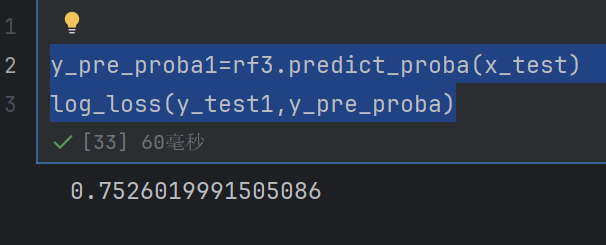
4.5 生成提交数据
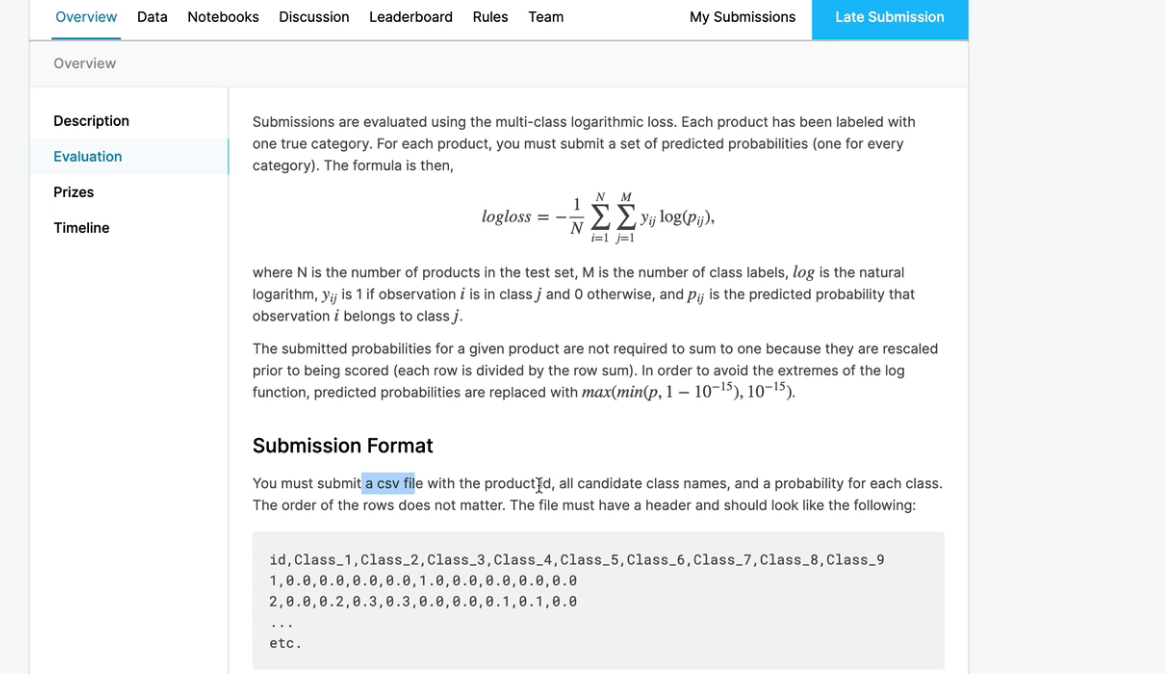
#生成提交数据
test_data=pd.read_csv("./source/test_oob.csv")
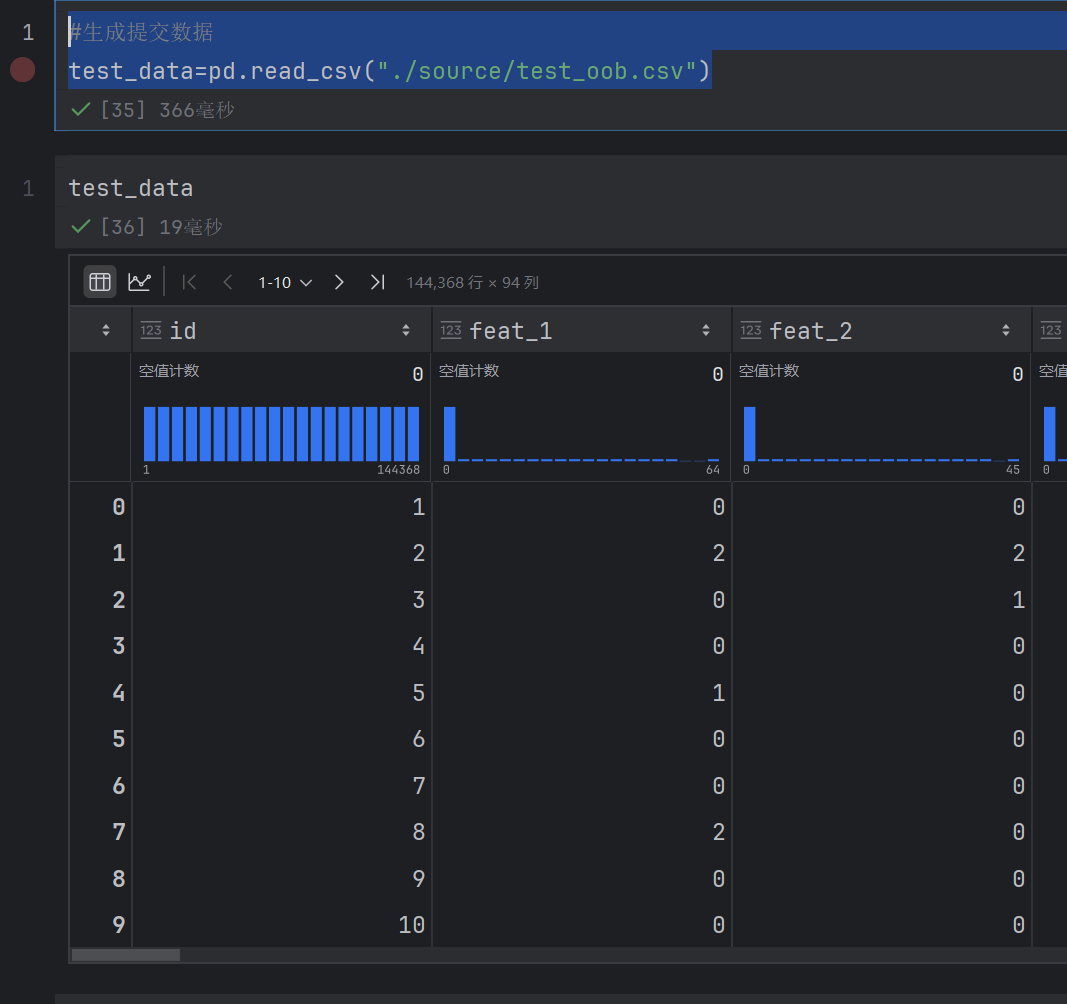
test_data_drop_id = test_data.drop(["id"],axis=1)
test_data_drop_id
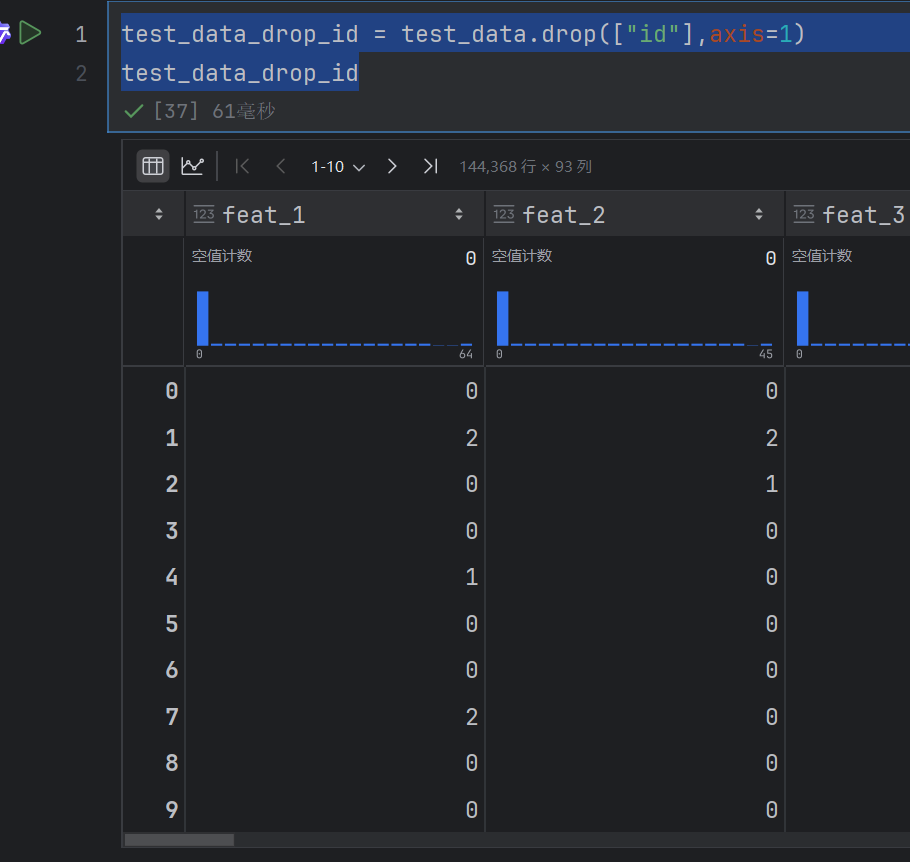
y_pre_test=rf3.predict_proba(test_data_drop_id)
y_pre_test
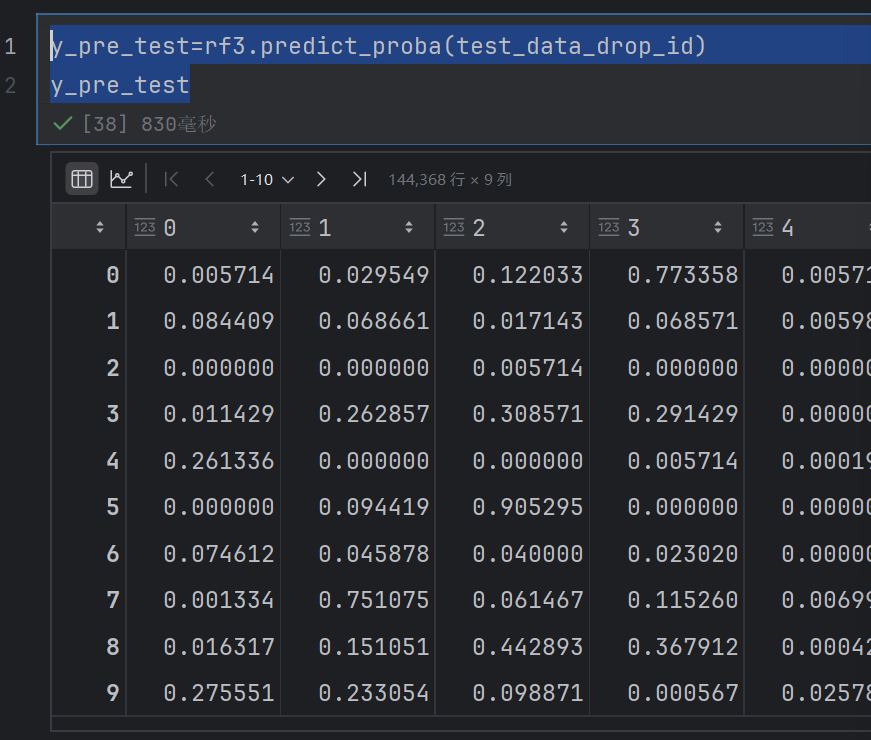
result_data=pd.DataFrame(y_pre_test,columns=["Class_"+str(i) for i in range(1,10)])
result_data
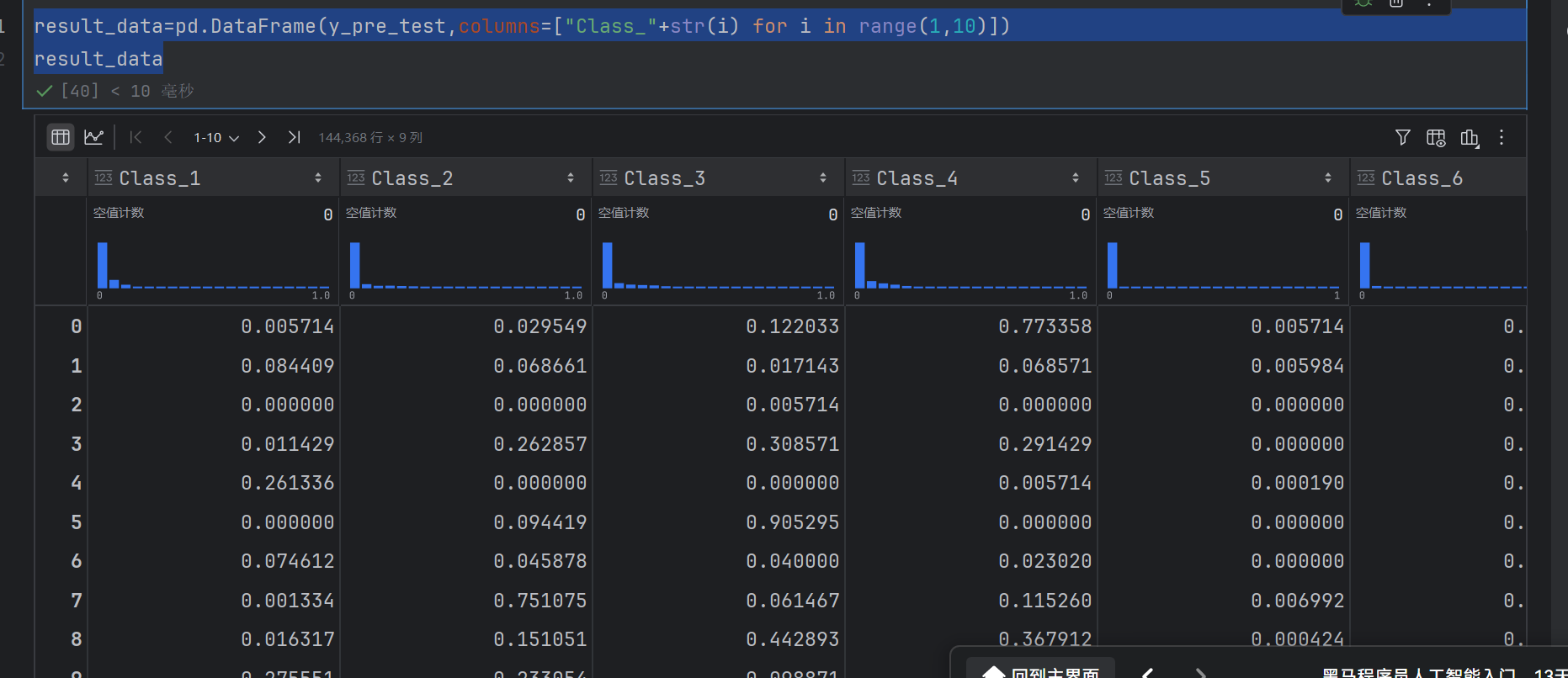
result_data.insert(loc=0,column="id",value=test_data["id"])
result_data
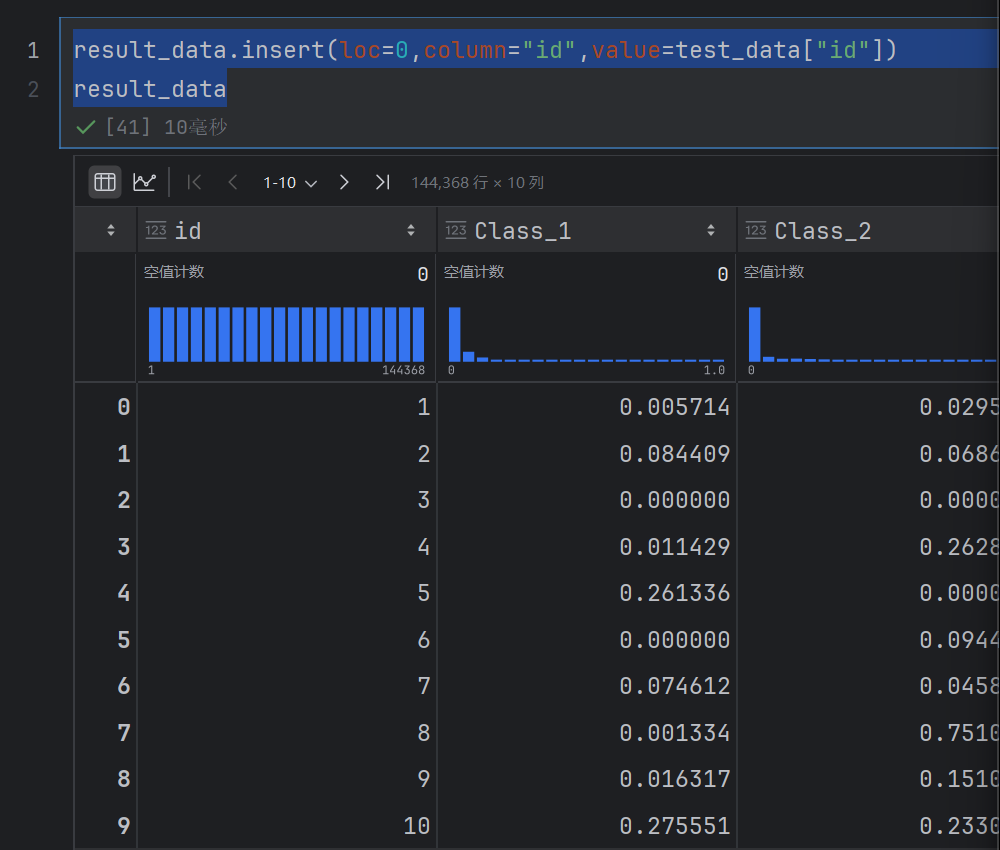
然后就可以存储为csv文件了
result_data.to_csv("./source/otto_result.csv",index=False)
当 index=False 时:导出 CSV 文件时不会包含 DataFrame 的索引列,只保存数据列

注意这里的id不是索引
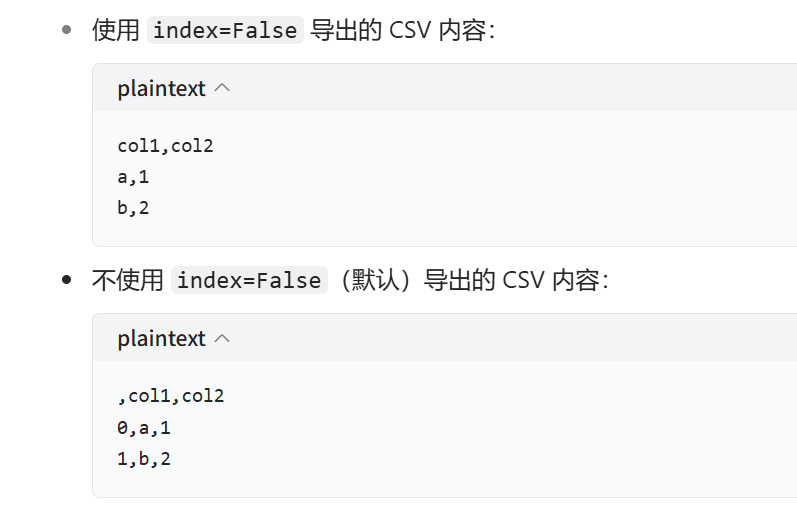
4. Boosting
随着学习的积累从弱到强
简⽽⾔之:每新加⼊⼀个弱学习器,整体能⼒就会得到提升
代表算法:Adaboost,GBDT,XGBoost,LightGBM

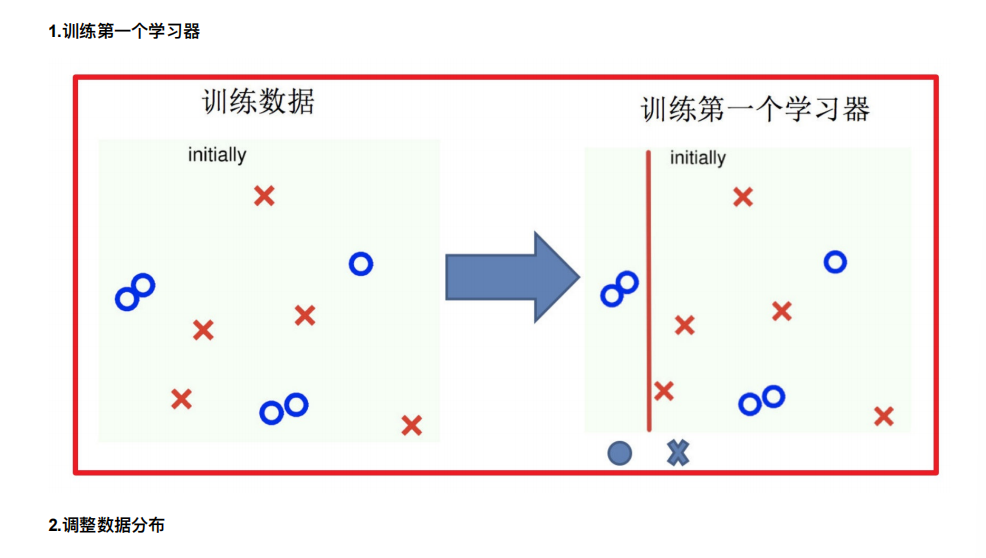

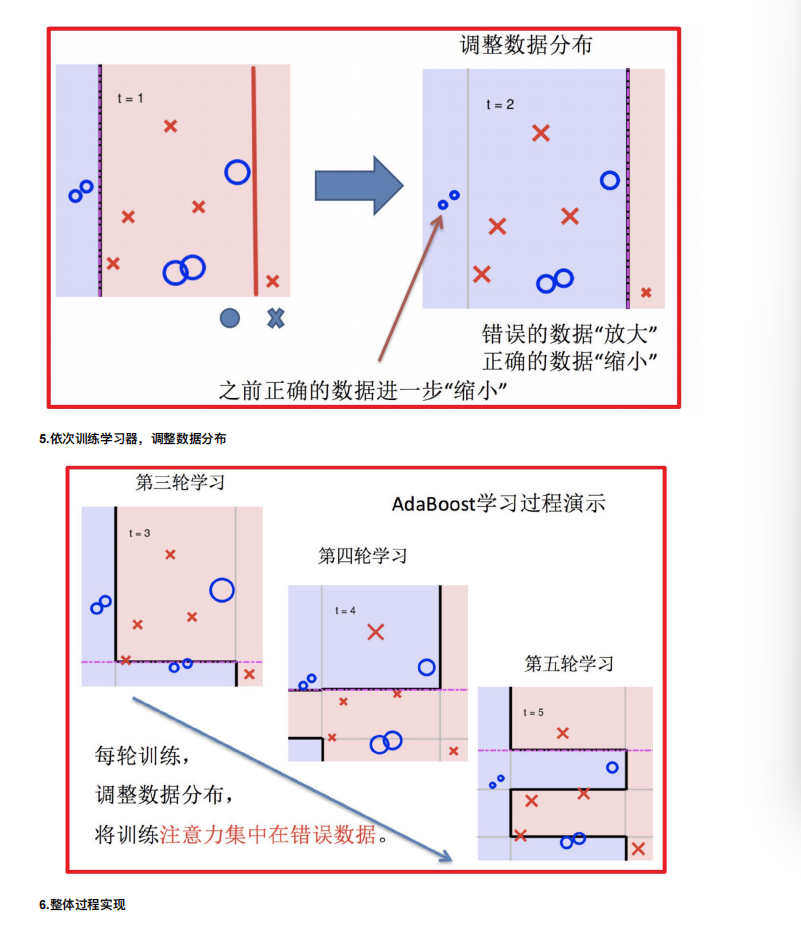
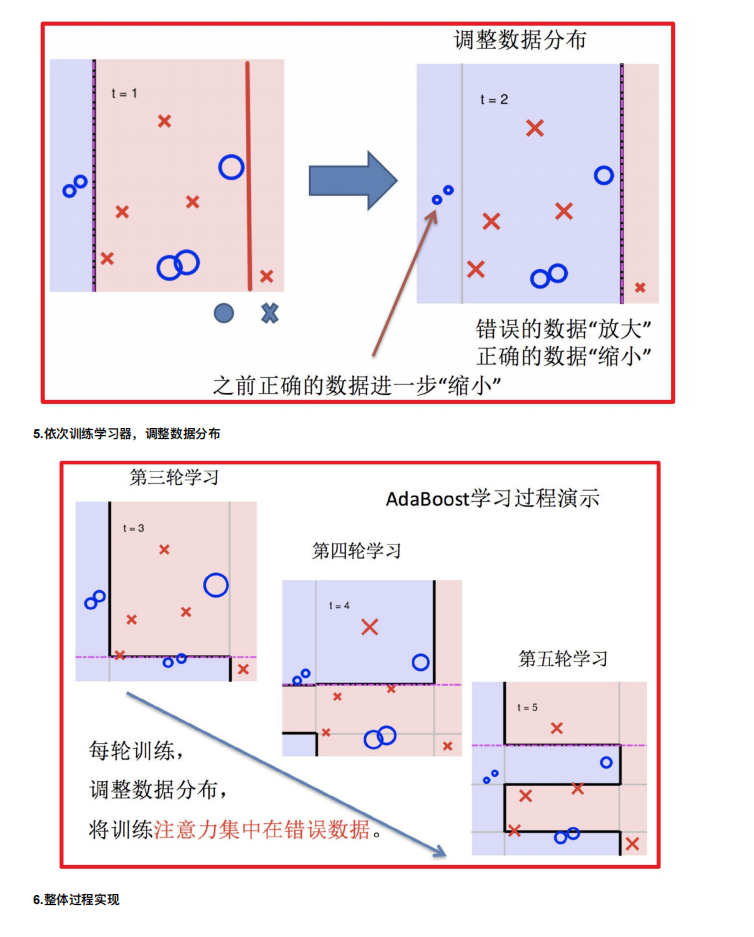
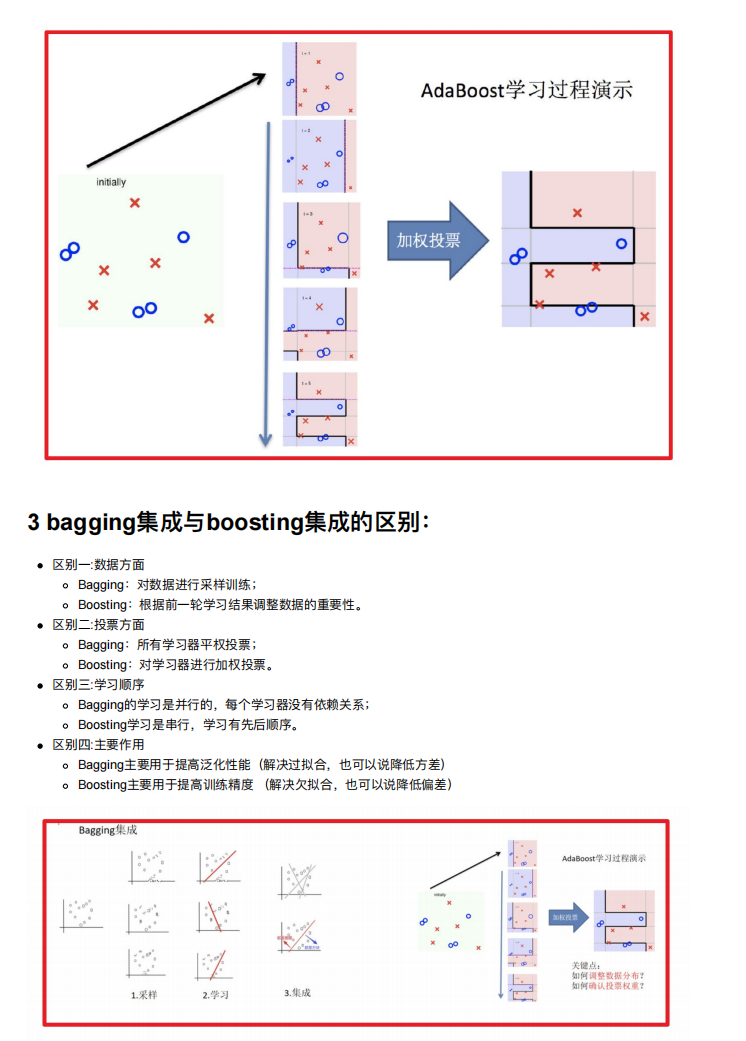
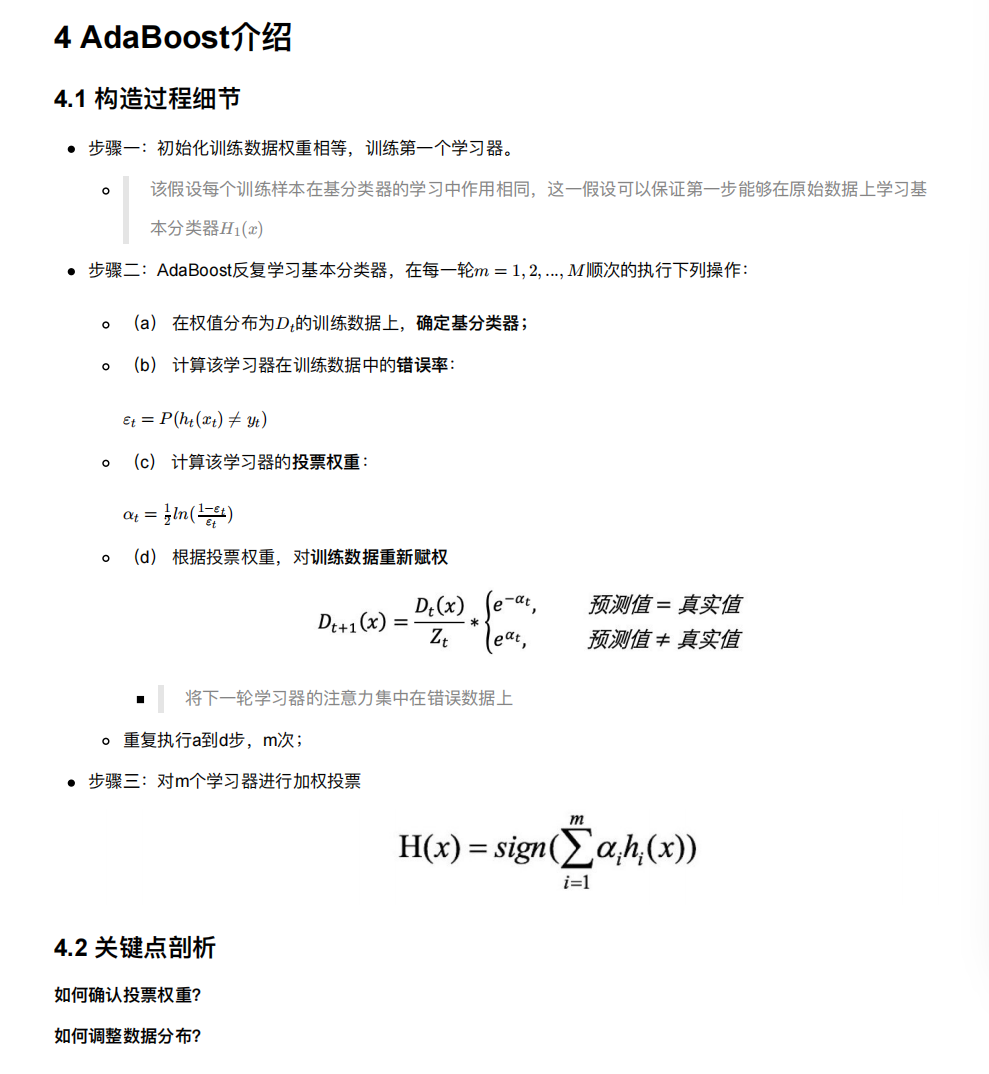
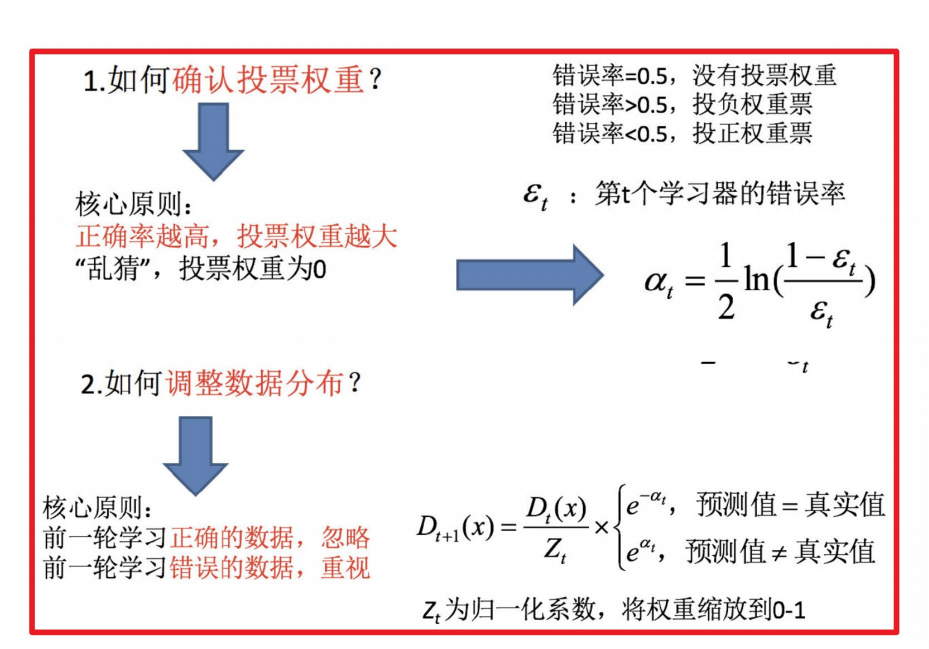
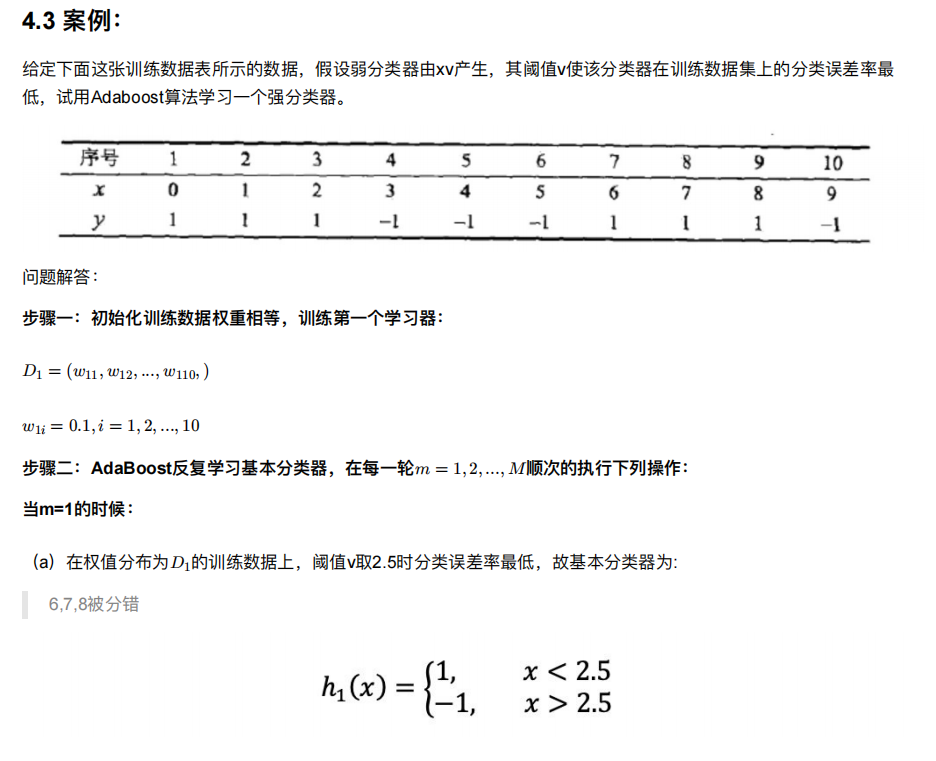
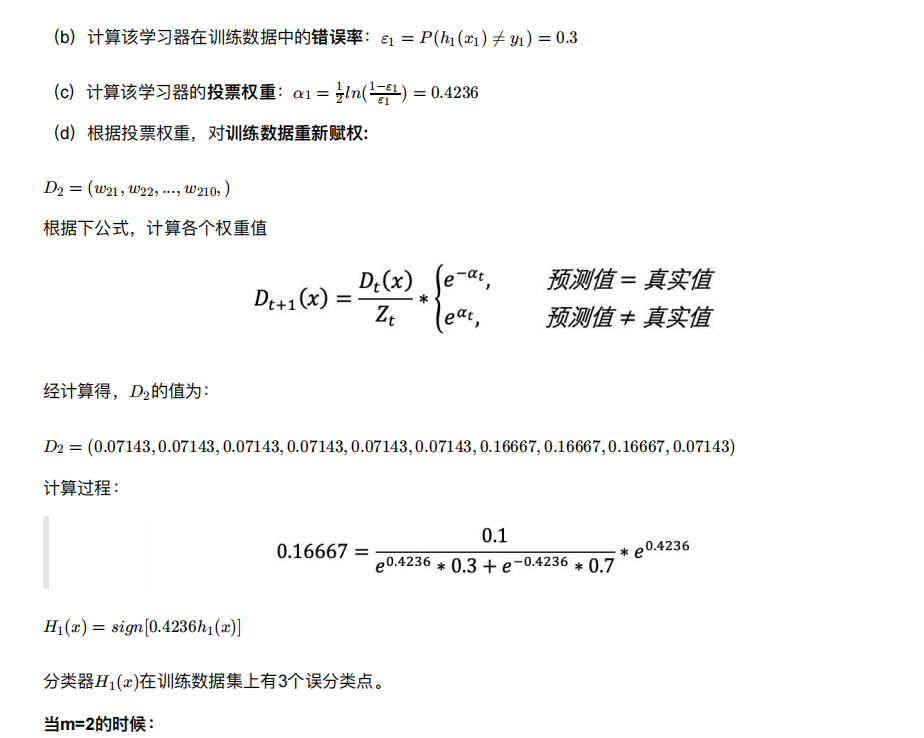

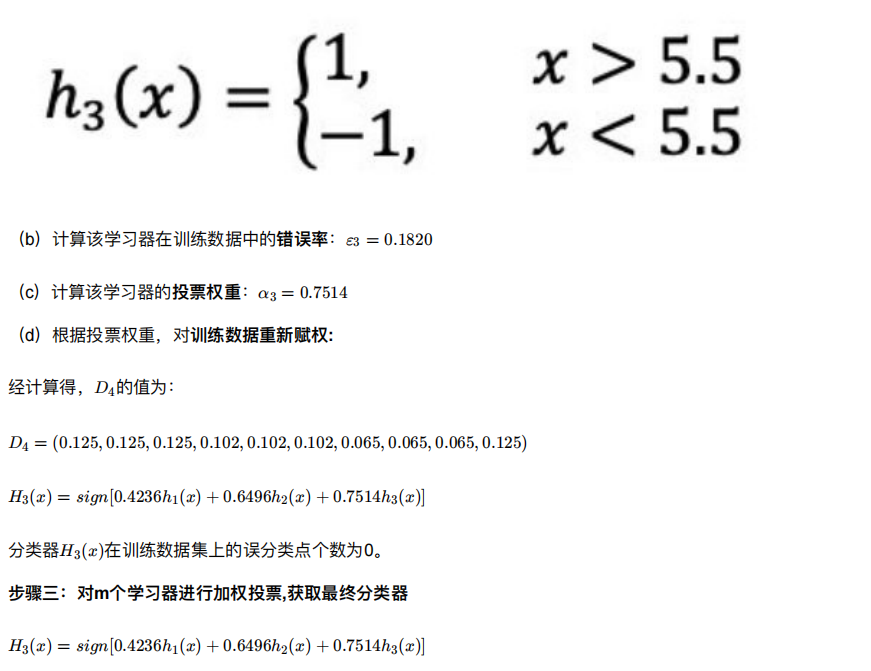
5. GBDT介绍
GBDT 的全称是 Gradient Boosting Decision Tree,梯度提升树,在传统机器学习算法中,GBDT算的上TOP3的算法。
想要理解GBDT的真正意义,那就必须理解GBDT中的Gradient Boosting 和Decision Tree分别是什么?
